- 3 Other destinations
- 4.1 Climate
- 4.2.1 Terrain
- 4.3 History
- 4.4 Culture
- 4.5 Holidays
- 4.6 Tourist information
- 6.1 Entry requirements
- 6.2 By plane
- 6.3 By boat
- 7.1 Inter-island
- 7.2 Bicycle
- 7.3 Railway
- 11.2 Tipping
- 11.3 Concerns
- 12.1 Indigenous Fijian cuisine
- 12.2 Indian cuisine
- 12.3 Where to eat
- 15.2 Political unrest
- 15.3 LGBT travellers
- 16.1 Diseases
- 16.2.1 Drinking water
- 16.2.2 Water safety
- 16.3 Sun safety
- 17.1 Religion
<a href=\"https://tools.wmflabs.org/wikivoyage/w/poi2gpx.php?print=gpx&lang=en&name=Fiji\" title=\"Download GPX file for this article\" data-parsoid=\"{}\"><img alt=\"Download GPX file for this article\" resource=\"./File:GPX_Document_rev3-20x20.png\" src=\"//upload.wikimedia.org/wikipedia/commons/f/f7/GPX_Document_rev3-20x20.png\" decoding=\"async\" data-file-width=\"20\" data-file-height=\"20\" data-file-type=\"bitmap\" height=\"20\" width=\"20\" class=\"mw-file-element\" data-parsoid='{\"a\":{\"resource\":\"./File:GPX_Document_rev3-20x20.png\",\"height\":\"20\",\"width\":\"20\"},\"sa\":{\"resource\":\"File:GPX Document rev3-20x20.png\"}}'/></a></span>"}'/> Fiji (Fijian: Viti , Hindi: फ़िजी) (sometimes called the Fiji Islands ) is an archipelago nation in Melanesia in the Pacific Ocean. It lies 2000 km north of New Zealand and consists of 332 islands, Viti Levu and Vanua Levu being the largest ones.
Fiji's main attraction is its paradise-like nature, with perfect palm-lined beaches, blue waters and green inland hills. Relax on the gorgeous sandy beaches of the Mamanuca Islands . Dive for the dark limestone Sawa-i-Lau cave in the Yasawa Islands . Discover the sand dunes of the Sigatoka Valley, once used as a burial ground, or head deep into Viti Levu to see Fiji's inland wildlife at the beautiful and jungle-covered Kulu Eco Park. From virtually any of the islands you can dive to experience Fiji's underwater beauty, or take a challenging hike along the ridges and through the dense rain forest of Bouma National Park, on Taveuni . Tall jungle trees, a colourful array of birds, waterfalls and volcanic peaks are just some of the attractions.
Fiji can be divided into nine groups of islands:
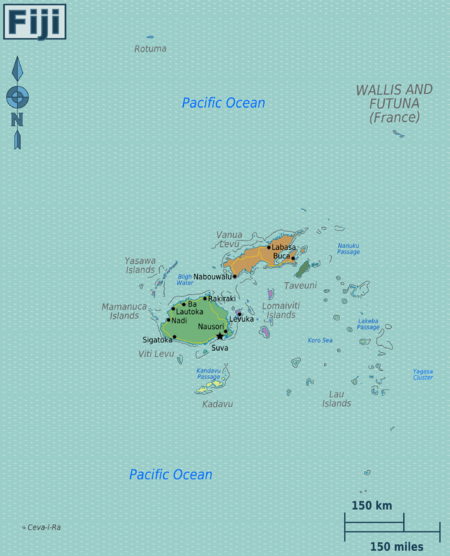
- -18.133333 178.433333 1 Suva — the capital, famously rainy and not often visited by tourists
- -17.624167 177.452778 2 Lautoka
- -17.684014 178.840128 3 Levuka
- -17.8 177.416667 4 Nadi (pronounced 'Nandi') — transit hub near the main airport
- -18.024444 178.545428 5 Nausori
- -16.816667 179.966667 6 Taveuni

Other destinations
- -17.777 177.3723 1 Denarau - gated tourist enclave near Nadi
- -17.3 178.216667 2 Nananu-i-Ra Island — off the northern coast of Viti Levu
- -17.688056 178.790556 3 Ovalau — sixth largest island, part of the Lomaiviti group
Fiji is the product of volcanic mountains and warm tropical waters. Its majestic and varied coral reefs today draw tourists from around the world, but were the nightmare of European mariners until well into the 19th century. As a result, Fijians have retained their land and often much of the non-commercial, sharing attitude of people who live in vast extended families with direct access to natural resources. When it came, European involvement and cession to Britain was marked by the conversion to Anglicanism, the cessation of animist beliefs, brutal tribal warfare and cannibalism, and the immigration of a large number of indentured Indian labourers, whose descendants now represent nearly half of the population, and there are smaller numbers of Europeans and other Asians. Today, Fiji is a land of tropical rain forests, coconut plantations, fine beaches, and fire-cleared hills. For the casual tourist it is blessedly free of evils such as malaria, landmines, or terrorism that attend many similarly lovely places in the world.
Internal political unrest since 2005 has reduced tourism. The Fiji tourism industry has responded by lowering prices and increasing promotion of the main resort areas that are far removed from the politics in and around the capital, Suva .
While the 180-degree longitude line crosses through Fiji, the international date line passes east of all of Fiji, making it one of the first countries to enter every new day.
Tropical marine; only slight seasonal temperature variation. Tropical cyclonic storms (the South Pacific version of hurricanes ) can occur from November-April. Temperature sensitive visitors may wish to visit during the Southern Hemisphere winter.
Fiji is 3,000 km east of Australia within the waters of the South Pacific Ocean. It comprises a group of 332 islands across its archipelago.
Mostly mountains of volcanic origin. In most of the interior of the main islands there are some roads, many trails, and an amazing number of remote villages. Buses and open or canvas topped "carriers" traverse the mountains of Vanua Levu several times a day and the interior mountains of Viti Levu many times weekly. (The Tacirua Transport "hydromaster" bus which leaves from Nausori in the morning, runs past the hydroelectric reservoir and mount Tomanivi, and arrives the same day in Vatoukola and Tavua is the best and the scenery is truly spectacular in good weather!)

Austronesians were the first settlers, who reached Fiji by 1100 BC. From 500 BC, Melanesian mariners reached Fiji, giving rise to the modern Fijians. By the 10th century, it came under the sphere of influence within the Tu'i Tonga Dynasty, bringing Polynesian customs.
Europeans explored Fiji in the 17th century, including Abel Tasman, who in 1643, accidentally discovered the islands. Then in 1774, Captain Cook explored Fiji, combining the names "Fisi" that people from Tonga called Fiji, and "Viti" that natives Fijians called their islands. It was briefly ruled under an independent kingdom until being transitioned to colonial rule under the British Empire in the 19th century.
Fiji became independent in 1970, after nearly a century as a British colony. Democratic rule was interrupted by two military coups in 1987, caused by concern over a government perceived as dominated by the Indian community (descendants of contract labourers brought to the islands by the British in the 19th century). The coups and a 1990 constitution that cemented native Melanesian control of Fiji led to heavy Indian emigration. The population loss resulted in economic difficulties, but ensured that Melanesians became the majority. A new constitution enacted in 1997 was more equitable. Free and peaceful elections in 1999 resulted in a government led by an Indo-Fijian, but a civilian-led coup in May 2000 ushered in a prolonged period of political turmoil. Parliamentary elections held in August 2001 provided Fiji with a democratically elected government led by Prime Minister Laisenia Qarase. There was another military coup in 2006, led by Commodore Josaia Voreqe (Frank) Bainimarama. An election was held in 2014 and Bainimarama's FijiFirst party won a majority of seats.
Indigenous Fijian culture and tradition is very vibrant and is an integral component of everyday life for the majority of Fiji's population. However, Fijian society has also evolved over the past century with the addition of Indian and Chinese immigrants, and because of heavy influences from Europe and Fiji's Pacific neighbours, particularly Tonga and Samoa. Thus, the various cultures of Fiji have come together to create a unique multicultural national identity.
- 1 January : New Year's Day
- Feb / Mar : Holi
- Rau Naumi (not an official holiday)
- Easter (variable)
- Eid al-Fitr (Islamic religious observance)
- 10 October : Fiji Day (Independence Day)
- Oct / Nov : Diwali (Festival of Lights)
- 25 December : Christmas Day
- 26 December : Boxing Day
Tourist information
- Fiji Travel website
Fiji has three official languages, namely English , Fijian and Hindi .
Fijian is the first language of the native Melanesian population, while a local variant of Hindi is mainly spoken by those of Indian descent. English is the lingua franca and medium of instruction in Fijian schools, and is widely spoken across Fiji. Residents of some remote islands may not be fluent in English, so learning some Fijian phrases will come in handy when travelling to those areas. Even in major cities, it is always polite to greet people with bula (meaning "hello" or "life" in Fijian) as it shows appreciation of the local culture.
A small number of other indigenous East Fijian and West Fijian regional languages (including Rotuman, a language spoken by the Rotuman people of Rotuma ) are spoken on the islands, standard Fijian belonging to the East Fijian group.
Entry requirements
Fiji has a liberal travel policy, and citizens of over 100 countries including the US, the EU, India and China do not need a visa. Most visitors are granted permits on arrival that last 4 months. The visitor permit may be extended for up to 2 additional months for a fee. All visitors receive entry stamps, but not exit stamps.
All others will need a visa. Visas can be applied for online , are processed in 3 working days, and cost $91/180 for single/multiple entry.
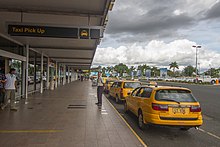
Nadi International Airport ( NAN IATA ) is Fiji's main international airport, and the main air hub for the Pacific island nations. Suva airport also has some international flights. Flag carrier Fiji Airways flies to Nadi directly from Los Angeles ( LAX IATA ), San Francisco ( SFO IATA and Honolulu ( HNL IATA ) in the United States , Vancouver ( YVR IATA ) in Canada , as well as Hong Kong ( HKG IATA ), Singapore ( SIN IATA ), Tokyo ( NRT IATA ) and many locations throughout Australia , New Zealand and the rest of the Pacific. Air New Zealand operates flights to Nadi from Auckland ( AKL IATA ), while Qantas operates flights from Sydney ( SYD IATA ).
From Brisbane the flight to Fiji is approximately 3 hours and 40 minutes, from Sydney 4 hours and 30 minutes and from Melbourne it is 5 hours and 30 minutes.
You can enter Fiji by boat from Australia through the Australia shore connection. Yachts must not stop at any island until they have clearance from Customs, Immigration, Health, and Biohazard officials. There are five official ports of entry in Fiji: Savusavu on Vanua Levu, Levuka on Ovalau, Suva and Lautoka on Viti Levu, and Oinafa on Rotuma.
Fiji is also a common port of call for cruise ships departing from Australia.
Fiji has a variety of public transport options, including buses, share taxis, and private taxis. Rates are very cheap: $1-2 ( Fiji dollars ) from Colo-i-Suva to Suva bus station by bus, $17 from Nadi bus station to Suva by share-taxi (share-taxis are usually white mini-vans that congregate and set-off when they reach their capacity of 6-8), or approximately $80 from Suva airport to Sigatoka by private taxi. On the main road circling Viti Levu buses run every half hour and taxis are a substantial proportion of traffic, while on western Taveuni buses make only a few runs per day and very little traffic is present. If the taxi has a meter, ask the driver to switch it on - the ride will be lot cheaper than with the negotiated price.
The rate from resorts on Nadi beach to Nadi downtown is $8 per passenger, and $12 to the airport -- you should be able to negotiate this price reasonably easily.
While there is rarely much traffic, most vehicles run on diesel and pollution on major roadways can be severe. A national speed limit of 80 km/h is usually observed; village speed limits are all but entirely ignored, but drivers slow down for several speed humps distributed within each village. Seat belts are advised on taxis but are rarely evident and apparently never used.
Road travel tends to be more dangerous than many people are used to, and many embassies advise their citizens to avoid pretty much any form of road travel. Pot holes, washouts and dilapidated bridges are commonplace. Buses are the best, unless you are truly comfortable and capable of renting and driving a car on your own - most people are not even if they think they are. Avoid travel at night, especially outside of urban areas. Another option is hop-on, hop-off bus passes which allow you to tour Fiji at your own pace for a fixed price. These are a more expensive way to travel but feature inclusions like tours and activities. However, some like Feejee Experience are limited to Viti Levu and trips to Beachcomber island and don't include the more remote islands.
Inter-island
Denarau Marina on Denarau Island is the gateway to all the inhabited Mamanuca and Yasawa Islands. This is where most cruises and ferries serving Fiji's tourism-oriented western islands operate from. Denarau Island is connected to the mainland via a short bridge, and is 20 minutes from Nadi International Airport. Alternatively, there are additional services to the Yasawas from Lautoka, about 30 min to the north of Nadi.

South Sea Cruises operates daily inter-island ferry transfers throughout Fiji's Mamanuca Island resorts, except Malolo Lailai (see Malolo Cat below). Awesome Adventures Fiji and the smaller Tavewa Seabus provide daily ferry transfers out to the remote Yasawa Islands. Inter-island ferries are reasonably priced and have a good safety record, though they may be busy at the beginning and end of school holiday periods. Ferries typically offer two or three classes (depending on the ship).
For fast boats to popular Malolo Lailai, the Malolo Cat service runs multiple daily departures from Denarau. A handy resource to compare and combine all ferry departures, timetables and connections to these island groups can be found on Fiji-bookings . The furthest extremes of the Yasawa islands take most of the day to reach, depending on weather, up to 5 or 6 hours. The Mamanucas, while on average much closer to the mainland, can also take multiple hours to reach. It is compulsory to be booked at an island resort for at least 1 night if you wish to disembark at any of the islands serviced by the ferry routes.
Fiji Searoad provides slow (car) ferry routes from eastern Viti Levu to Vanua Levu, Ovalau and Koro. They also include bus transfers from all main settlements on Viti Levu in combination with their ferry departures. However, in most cases it is wise to compare the pros and cons of such a long sea voyage (typically 10-12 hr) with more abundant and much faster (however more expensive) domestic flights.
Economy ($65 pp on Suva-Taveuni route) is the cheapest option, but requires you to sleep on chairs or on the floor. Sleeper ($104 pp, Suva-Taveuni) is dormitory-like accommodation. Cabin ($135 pp on MV Suiliven, $95 pp on SOFE, Suva-Taveuni) is not necessarily the best option, as the space is very limited, cabin can be shared (4 beds) and can have hordes of bugs.
Do not attempt to take a car to another island unless you own it or have made clear special arrangements: most rental companies forbid it and they do prosecute tourists who violate this clause in the contract.
Getting to the more remote islands such as the Lau group usually is exclusively possible by boat charter, domestic flight or plane charter. An official invitation from the local chief is usually required.
Bicycles are becoming more popular in Fiji for locals and tourists alike. In many ways, Fiji is an ideal place for a rugged bike tour. However, the motor vehicle traffic can be intimidating on well-travelled roads, and there is a lack of accommodation along secondary roads. Cycling is a great way to see Fiji but make sure you carry all your own spares and supplies as bike shops are scarce. It is a good idea to carry plenty of water, a camelbak is great, as it is very hot and humid almost year round.
The main road around the largest island, Viti Levu, is sealed except for a 40-km section on the east side. A sturdy road, touring or hybrid bike is suitable.
Bike rental can be quite expensive comparing to other options: on Taveuni bike for full day costs $25. With two persons the cost is similar to renting a car.
The extensive system of narrow gauge railways used to transport sugar cane to the refineries also carried passengers for free or cheaply in the past, but the infrastructure is falling into disrepair and the opportunities are closing. Thus, the Coral Coast Railway offers a tourist train ride, but no further than Sigatoka as the railway river bridge there has collapsed. Its station is at 18°8'27"S 177°25'50"E (across the main road from The Gecko Lodge, by the turnoff to the Shangri-la Resort) and its westward excursions from that station are off, because of another unrepaired bridge collapse immediately west of the station. Mechanical failures may mean no offerings during the time of your visit.
There is talk of another tourist train scheme based in Nadi. As you leave the airport, you will cross the tracks.

In short, the natural treasures alone are worth the trip, but this island nation does have a number of cultural sights to offer. There's the beautiful Garden of the Sleeping Giant on Nadi , once owned by famous actor Raymond Burr who lived here. It holds over 20 hectares full of orchids native to Fiji, many cultivated and exotic plants plus a lovely lily pond. Make a trip to one of the many villages to take part in a kava-ceremony or to see one of the many other remaining cultural traditions. Navala village (on Viti Levu ) still maintains its traditional bures, making it an excellent pick. For a deeper insight in the country's history and culture, the Fiji Museum on Suva is an excellent addition to your trip.
Sport is a large part of Fijian culture.
- Rugby union is the national sport, and even in the poorest villages, you can see children playing rugby in any open field available making use of plastic bottles or something similar as substitutes if they can't afford to buy an actual rugby ball. The ANZ stadium in Suva is Fiji's national stadium, and the Fijian national team typically performs a traditional war dance known as the cibi before every test match. Fiji contests the Pacific Nations Cup with the neighbouring countries of Tonga and Samoa , and regularly sends teams to the Rugby World Cup, having made the quarter finals twice. In addition to the traditional 15-a-side game, Fiji also regularly competes in rugby sevens, where it is the world's most successful team, having been the most successful team in the Hong Kong Sevens, as well as the winner of the gold medal at the inaugural rugby sevens tournament at the Olympics.
- Soccer (also known as football ) is a growing sport in Fiji. The Fiji Premier League is the highest men's soccer league in Fiji, which has promotion and relegation with the Fiji Senior League, while the highest women's league is the Fiji Women's Super League, which has promotion and relegation with the Fiji Women's Senior League. Fiji has never qualified for the Olympic football tournament, nor have they ever qualified for the FIFA World Cup or the FIFA Women's World Cup. The men's national team is nicknamed the "Bula Boys".
- Whitewater rafting , Rivers Fiji, P.O. Box 307 Pacific Harbour , ☏ +1-209-736-0597 . Rivers Fiji operates whitewater rafting and sea kayaking trips six days a week.
- The Pearl , Queens Road, Pacific Harbour, Pacific Coast , ☏ +679-773-0022 . The Pearl Fiji Championship Golf Course and Country Club is situated in Pacific Harbour and surrounded by beautiful tropical forests. With more than 60 bunkers, multiple water traps, and winding course, it provides a challenge for even the most experienced golfers.
- University of the South Pacific [ dead link ] , Suva
- Fiji National University
- The Fiji School of Medicine [ dead link ]
In Fiji the currency is the Fijian dollar , denoted by the symbol " F$ " or " $ " (ISO currency code: FJD ). Wikivoyage articles will use $ to denote the currency.
Bills include: $2, $5, $10, $20, $50 and $100. You may also encounter a $7 Fijian note, although you're better off keeping that rather than spending it as it is quite rare. Coins include: 5 cents, 10 cents, 20 cents, 50 cents, $1, and a $2 coin. In some areas, the Australian dollar is also accepted, but unlike some other Pacific Island countries, AUD is not the preferred method of payment.
In Fiji, tipping is virtually non-existent. This includes no tipping to taxis, hotels, bellpersons, restaurants, etc. However, at most all-inclusive resorts and amongst the scuba diving operations, they have a "Christmas Box" where you can donate money that is shared equally amongst all the staff at Christmas time.
Expect to pay prices similar to those of Australia in tourist regions.
Be aware when going to local markets, often some of the stall holders family will be outside on the lookout for travellers, and will escort the travellers inside using the guise of "getting the best bargains". Once inside they, and their relatives who own the stall, can become quite aggressive if the traveller does not buy their products. Be firm, tell them that you will report them to the authorities if they do not leave you alone. They will quickly change their tone and back down.
Also be aware of small travel counters acting as travel agents, even in some hotels, or on wharves where boats pull in. They may not be accredited, or may be an outright scam. While tourist police have been created to assist tourists in such predicaments, time constraints may restrict tourists ability to retrieve monies. Ask resort managers for more advice.

Indigenous Fijian cuisine
Traditional food in Fiji relies heavily on tubers like taro, yams, sweet potatoes ( kumala ), manioc ( tavioka ) and breadfruit ( uto ), served with a relish made from meat, fish, seafood, and vegetables. Dishes to look out for:
- palusami , baked taro leaves marinated in lemon juice and coconut milk often with some meat or fish filling and a bit of onion or garlic
- kokoda , raw fish or other seafood marinated in lemon and coconut milk, similar to ceviche
- lovo , food cooked in a pit oven. Not found at restaurants, but many hotels offer lomo "feasts" for dinner.
Don't miss fresh tropical fruits, found at the farmer's market in any town when in season. Vutu is a local variety of nut mainly grown on the island of Beqa , but also available in Suva and other towns around January and February. A great deal of food is cooked in coconut milk: everyone reacts different to increased fat levels in their diet. Chicken is often served chopped into pieces with the bones left.
While traditional Fijian cuisine is quite bland, Indian migrants brought along their food and have definitely spiced things up. South Asian cuisine is widely available and thali platters served with rice and roti flatbread are spicy, cheap and often delicious.
Indian cuisine
Due to the large number of Indians in Fiji, Indo-Fijians have developed their own cuisine, which blends traditional Indian cuisine with Fijian and Western cuisines.
Fiji is home to many local curry variants. One of the most well-known Fijian curries is fish suruwa, a type of fish curry that originated in Fiji.
Where to eat
Locals eat in the cafes and small restaurants that are found in every town. The food is wholesome, cheap, and highly variable in quality. What you order from the menu is often better than what comes out of the glass display case, except for places that sell a lot of food quickly and keep putting it out fresh. Fish and Chips are usually a safe bet, and are widely available. Many cafes serve Chinese food of some sort along with Indian and sometimes Fiji-style fish, lamb, or pork dishes. Near the airport, a greater variety of food is found, including Japanese and Korean.
Fiji also has some fast food options in cities and major towns, including McDonald's (locally known as "Maccas") and Burger King.
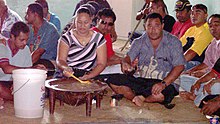
A very popular drink in Fiji is yaqona ("yang-go-na"), also known as "kava" and sometimes referred to as "grog" by locals. Kava is a peppery, earthy tasting drink made from the root of the pepper plant (piper methysticum). Its effects include a numbed tongue and lips (usually lasting only about 5-10 minutes) and relaxed muscles. Kava is mildly intoxicating, especially when consumed in large quantities or on a regular basis and you should avoid taxi and other drivers who have been drinking. It should not be consumed alongside alcohol.
Kava drinking in Fiji became popular during the fall of cannibalism, and originated as a way to resolve conflict and facilitate peaceful negotiations between villages. If you are invited to a Fijian village or household, it is the most common gift ( sevusevu ) offering to bring.
Beer is also popular, particularly the ubiquitous Fiji Bitter . While a fairly new development, some of those sugarcane fields are now put to good use by distilling rum, and the Rum Company of Fiji has a nice range under the brands Bati and Ratu .
Fiji is a popular tourist destination and has plenty of accommodation in all price brackets. Most resorts are near the main airport at Nadi or the nearby Mamanuca Islands . Nadi has backpacker-friendly lodges, while the international big brands are mostly nearby at Denarau Island . Hotels in the capital Suva are geared more towards business travellers.
Most Fiji travel agents will take a commission of 15 and 20% along with your booking, which may be called a "deposit". Since this is an up-front payment, it is often beneficial to only book one night, and then you may be able to negotiate a lesser rate for subsequent nights (if space is available).
Many smaller and simpler accommodations have "local rates" and can give discounts that are simply huge if you can book a room in person (or have a local do it for you) and give a legitimate local address and phone number. In the Suva area, the Raffles Tradewinds is nice and quiet and about a dollar by frequently running buses from central down town. Sometimes upon arrival at the airport in Nadi, you can stop at the Raffles Gateway across from the airport entrance and book a room at the Tradewinds at a good local rate if business is slow.

- Village Stays , Throughout Fiji . Finding details is very difficult. Villages vary, as do amenities (including electricity), ensure you have an idea of what is included, any additional costs, what activities are available, before arriving. Unlike resorts, villages require shoulders to be covered at all times, and sometimes sulu (sarong) to be worn, for all genders. Your hosts will be more than happy to explain cultural requirements. Price varies - ensure you bring kava for sevusevu .
Most crime takes place in the outer suburbs of Suva and Nadi, away from the resort areas. The best advice is to stick to hotel grounds after dark, and to use extreme caution in Suva, Nadi and other urbanised areas after nightfall. Travellers have been victims of violent crime, particularly in Suva. Travellers have reported the regularity of petty robberies, muggings, and also home-invasions/rape, etc. You will notice the predominance of bars on most peoples' homes. Economic and ethnic strife has led to a low-level hum of violent crime. Some resorts and hotels have more extensive security measures than others which should be taken into account.
Muggings are often carried out by large groups of men so being in a group won't necessarily be a deterrent. Police forces sometimes have difficulties responding to crime, potentially for reasons as mundane as being unable to pay for petrol.
Fijian culture encourages sharing and sometimes small things like shoes will be "borrowed". Often by speaking with the village chief it can be arranged to get things returned.
Political unrest
Fiji has been subject to occasional political unrest and upheaval, including five coups d'état since 1987, with the most recent occurring in 2009. These upheavals have damaged the Fijian economy, including its tourism sector, and have led to relative international isolation. While as of April 2021 there is no significant unrest or potential for a coup, visitors should stay aware of political news in the country and those doing business in Fiji should ensure that their contracts and visas remain valid. Even in the event of unrest, tourists at resorts and hotels will likely remain safe, especially if they are not in Suva. If unrest does happen, and you happen to be in a hotspot such as Suva, avoid areas where protests may occur, and have the information for your country's embassy handy in case you are detained or are required to evacuate.
LGBT travellers
Although Fiji is a religious country, Fijians are generally quite tolerant of LGBT people. Fiji has more advanced LGBT rights than almost every other Oceanian country, the sole exceptions being Australia and New Zealand.
The age of consent in Fiji, regardless of sexual orientation or gender, is 16, with the laws being the same in the United Kingdom, New Zealand and most of Australia. Consensual sex between two men has been legal in Fiji since 2009.
Discrimination, including on the basis of sexual orientation or gender identity, has been banned by the Constitution since 1997. Fiji was the second country in the world to enshrine discrimination protections for LGBT people in its constitution, the first being South Africa.
Same-sex marriage and civil unions are not legally recognised in Fiji. The only Oceanian countries where same-sex marriages are legally recognised are Australia and New Zealand.
Stay healthy

Fiji is relatively free of disease compared to most of the tropics. Avoid mosquito-borne illnesses, such as dengue fever and even elephantiasis by covering up thoroughly or using repellents while outdoors at dawn or dusk.
Drinking water
While water is often unsafe to drink in several Pacific Island nations, water in Fiji is generally safe to drink , though filtering or boiling is advisable when unsure. Urban tap water is treated and nearly always safe. When exceptions occasionally arise, there are public warnings or radio and print media warnings. Contaminated food is uncommon, though on occasion, mature reef fish can contain mild neurotoxins they accumulate in their bodies from freshwater algae that wash into the ocean. The effects of such "fish-poisoning" are usually intense for only a day or two, but tingling lips and unusual sensitivities to hot and cold can linger for a long time.
Water safety
Drownings are common, and automobile and other motor vehicle accidents (often involving animals or pedestrians) are very common. Local emergency medical care is very good on the basics in urban areas. Expect long waits in government-run clinics and hospitals. Treatment for serious conditions often requires an evacuation to New Zealand or Australia. Even the most basic medical care is usually not available outside of urban areas.
Fiji, like most of the South Pacific, can have intense solar radiation that can cause severe skin-burns in a short amount of time. Be sure to use hats, sunglasses and liberal amounts of high-SPF value sunblock on ALL exposed skin (including ears, noses and tops-of-feet) when out in the sun. On top of that tropical boils are a common inconvenience in Fiji, this can be avoided by giving those sweaty sections of the body a soapy scrub more than once a day.
Fiji, like many Pacific Island states, has a strong Christian moral society; having been colonised and converted to Protestantism by missionaries during the 19th century. Do not be surprised if shops and other businesses are closed on Sunday. The Sabbath starts at 6PM the day before, and some businesses celebrate the Sabbath on a Saturday instead of a Sunday. Many Indians are Hindu or Muslim.
Dress modestly and appropriately. While Fiji is a tropical country, beach-wear should be confined to the beach. Take your cues from the locals as to what they consider appropriate dress for the occasion. When visiting towns and villages, you should be sure to cover your shoulders and wear shorts or sulus (sarongs) that cover your knees (both genders). This is especially true for visiting a church, although locals will often lend you a sulu for a church visit.
There is no nudist/naturist or topless bathing in Fiji.
There are two mobile phone companies operating on the island (Vodafone, Digicel) as well as an MVNO (Inkk) which resells Vodafone's network. Tourists are invited to use prepaid sim chips which can be found free or cheap in the mobile operator kiosks in the Nadi airport. You can top-up the balance online with a credit card, or by visiting a retail store that advertises top ups. The phone number is required to top up and is provided when signing up for the sim chip so please make a note of it.
Buying a SIM chip gives access to cheap data packages for easy internet access using your phone as a hot-spot. It is generally cheaper than resort Wi-Fi, and speed is reasonable with the connections in the tourist areas (1-8Mbps with an objective 2.5Mbps average based on use in Nadi). You can request a data-only sim to get access to cheaper data packages. Some plans offer free social media data. Be sure to ask the sales agent about promotions. Both networks use 900Mhz for GSM and a mix of 800/1800/2100Mhz for 3G/4G.
- Vodafone offers a battery powered portable wifi device for $59 branded as "Pocket WiFi". The device can be unlocked for use in other countries by contacting support via email or using the online chat feature on the website. In October 2021 a $15 prepaid plan grants 100GB of data.
- Digicel [ dead link ] offers prepaid "Digimodem" plans. The sim card must be converted to a data sim by the sales rep only after inserting it into a modem. Digicel offers a portable battery powered dual-band Wi-Fi device for $199 which is locked to the Digicel Fiji network. Check in retail stores for more economical modems or bring your own unlocked modem. Alternatively, a mobile phone can be used as a hotspot with slightly more expensive regular data charges.
Public phones are numerous and usually easy to find (look around shops). Calling cards can be used to make international calls. Internet cafes are available in city centers.
- Has custom banner
- Has map markers
- Do listing with no coordinates
- Articles with dead external links
- Sleep listing with no coordinates
- All destination articles
- Outline countries
- Outline articles
- Country articles
- Has Geo parameter
- Pages using the Kartographer extension
Navigation menu

- Accommodation
- Food & Drink
- Activities & Attractions

- Accommodation & Dining
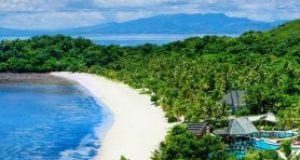
- Accommodations & Dining

- Pacific Harbour & Beqa
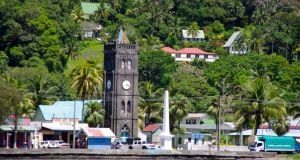
- Viti Levu-Gateway to the Fiji Islands

- Traditional Fijian Art

- People of Fiji

- On Fiji Islands Book

- Natural History

- Kava — Integral to Fiji Society

- Fiji in the Cinema

- Useful Fijian Words and Phrases
- Fijian-English Vocabulary
- Say it in Fijian
- Making the Fijian Alphabet
- Explorers and Missionaries encounter Fijian
- Captain Cook collects vocabulary in Fiji
- Explorers, Traders and the first philolgists
- The Interpreters
- Origin of the word “Fiji”
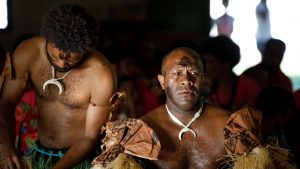
- Fiji Culture--an Introduction
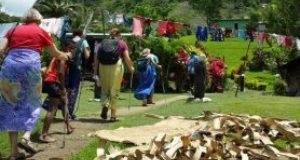
- Village Protocol

Diving in Fiji
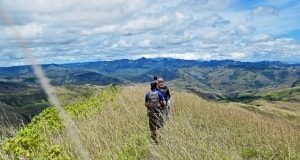
Seven reasons to go hiking in Fiji
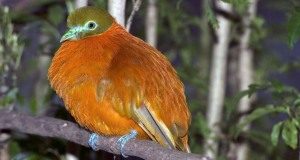
- Bird Watching

Golf in Fiji
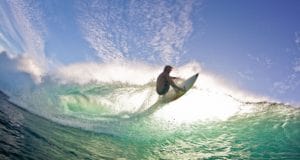
- Viti Levu and Beyond
- Surf Resorts
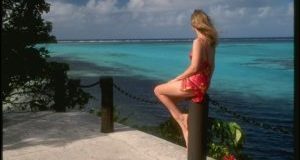
- Visas, Customs, etc

- What to Bring
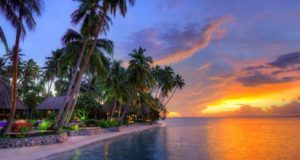
- Fiji Weather

- Health Tips & Covid Info

- International Flights
- Domestic Flights
- Rental Cars
- Navigating Fiji via Bus & Coach
- Ferries & Water Taxis
- Driving in Fiji

- Fiji Islands FAQs
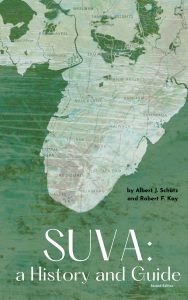
- Suva: A History & Guide
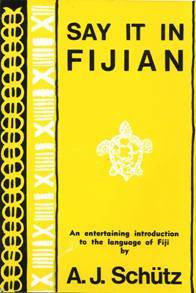
- Nonfiction Fiji Books
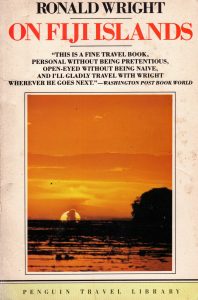
- Fiji NGOs we support
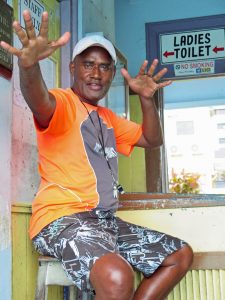
- About Us Authors

Visit the Happiest People on Earth
* A 2014 Win/Gallup International poll of countries found that Fiji's people are the happiest on Earth, with 93 percent of Fijians answering they were either "happy" or "very happy". (Fijiguide.com is indebted to Jon Apted, founder of Humans of the Fiji Islands, for permitting us to use his remarkable portraits of Fiji people, featured on this page and elsewhere on the site. Vinaka, Jon).
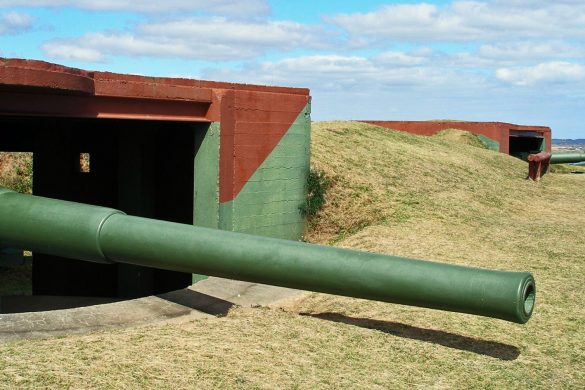
Nadi, Denarau & Lautoka Attractions
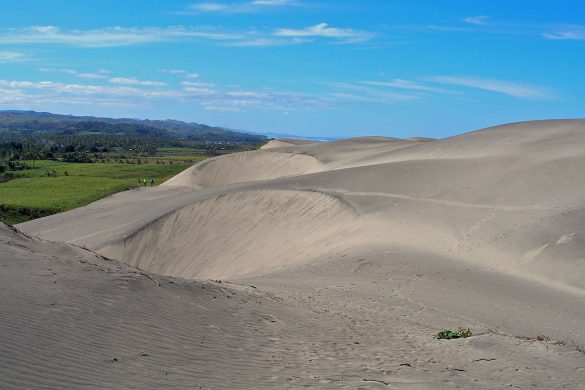
Coral Coast Attractions & Activities

Exciting places to go
Visit an outer island and experience Fiji like a local. Vanua Levu, Taveuni and Ovalau (home of Fiji's old Capital) have rain forests, waterfalls, pristine reefs, national parks and indigenous culture.
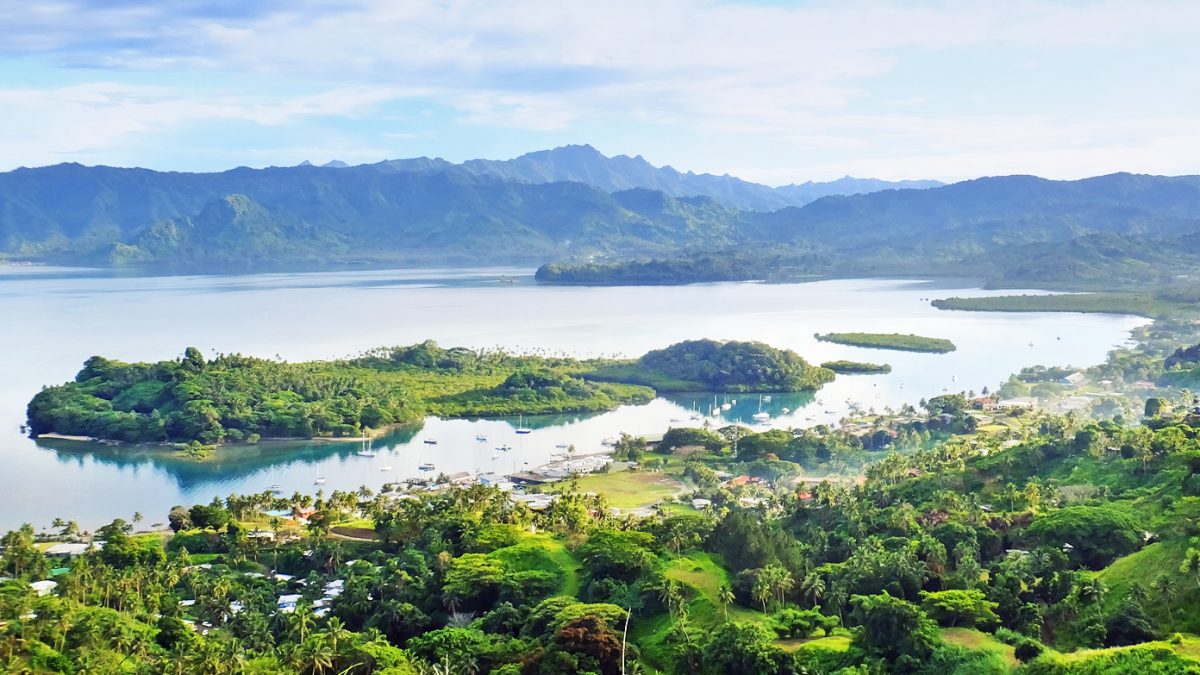
Vanua Levu (Savusavu & Labasa)
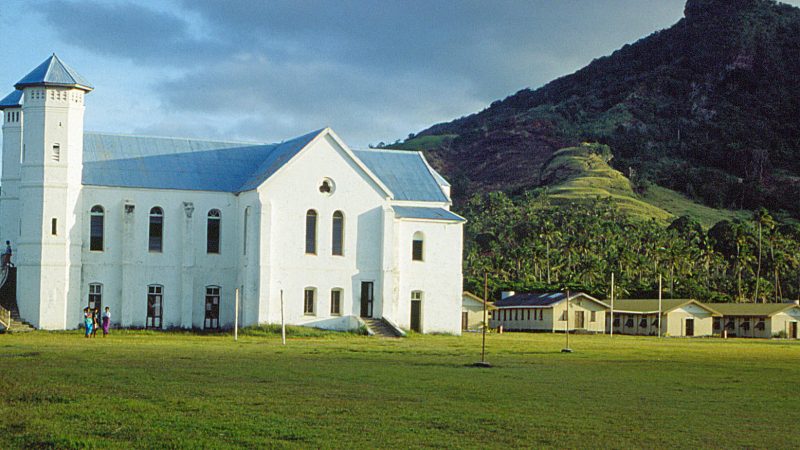
Levuka, Fiji’s First Capital
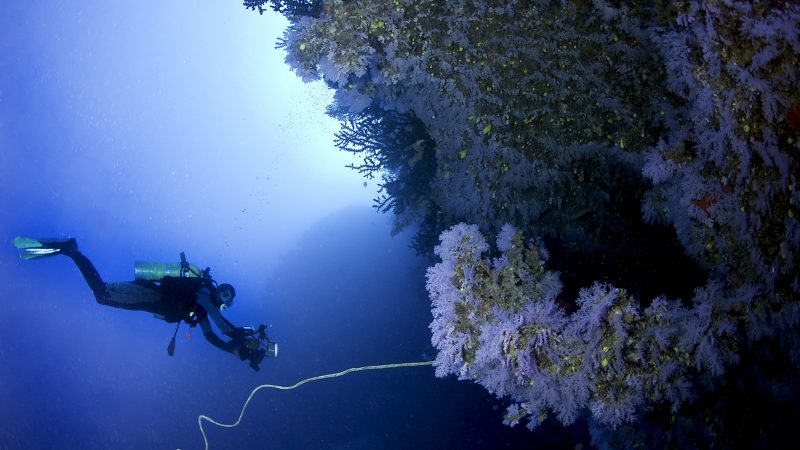
Taveuni – Fiji’s Garden Island
Natural highlights.
In Fiji, you can enjoy the great outdoors all year around.

Trekking & National Heritage Parks
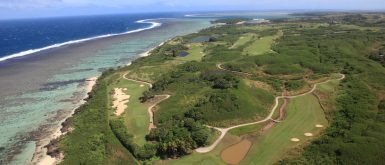
Treat your palate to an explosion of tastes ranging from hot spiced curry to cool Kokoda
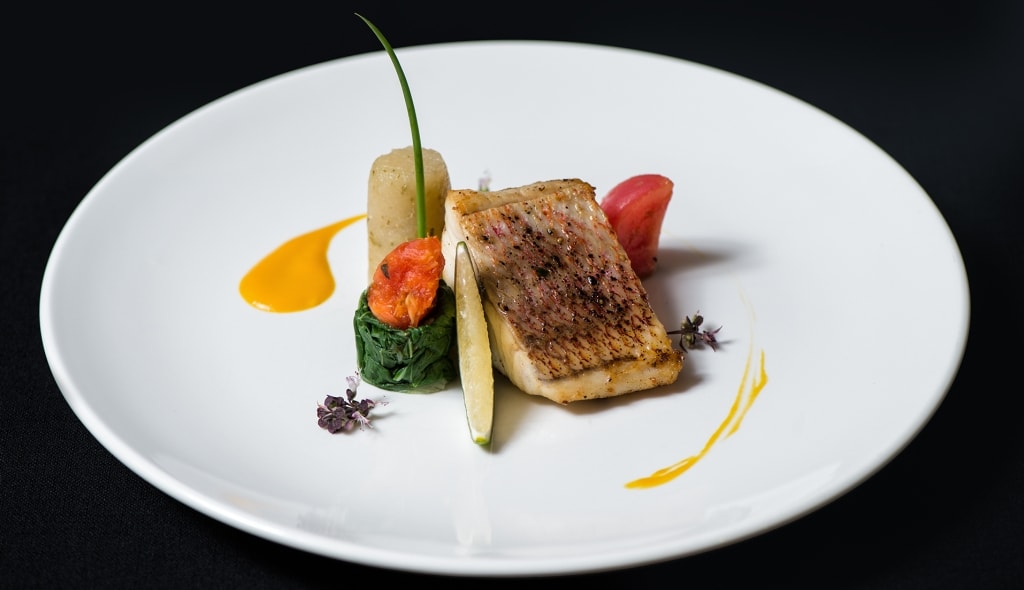
Nadi & Denarau Restaurants
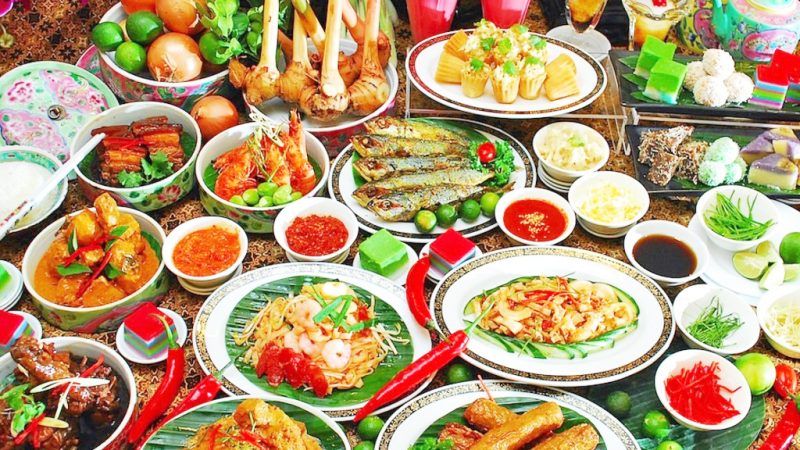
Suva Restaurants and Cafes
Latest blog posts.
Read our adventures, and inspiring journeys around Fiji

Back in Fiji–Paddy Ryan on the move–Part 2
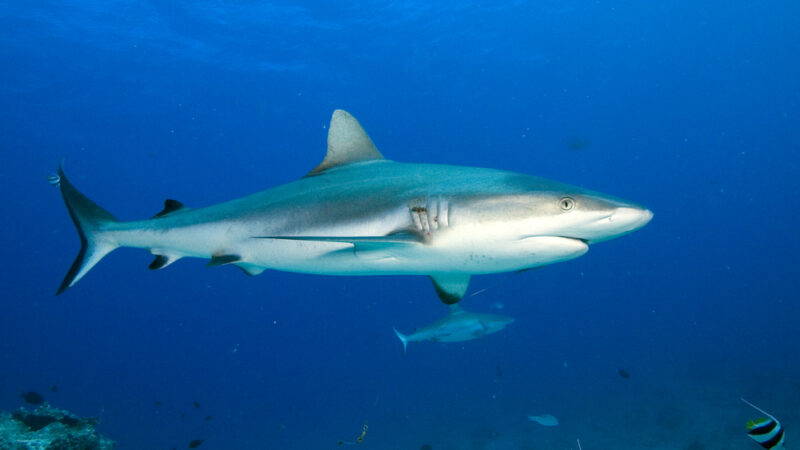
Back in Fiji–Paddy Ryan on the move–Part 1
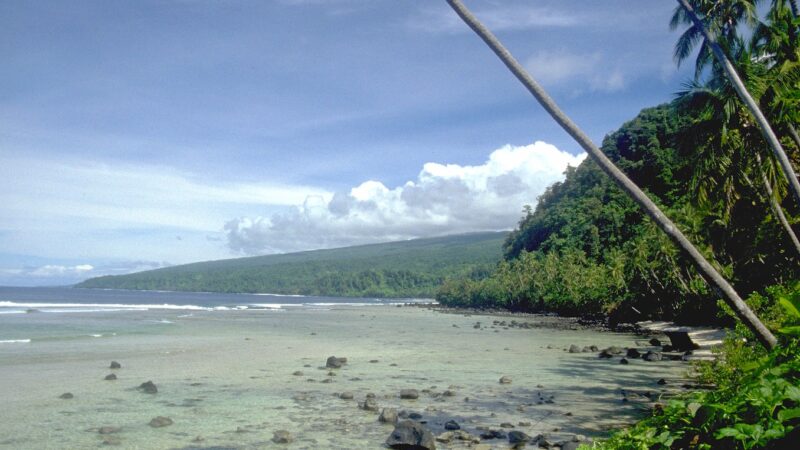
Paddy Ryan’s new edition of Fiji’s Natural Heritage is a work in progress
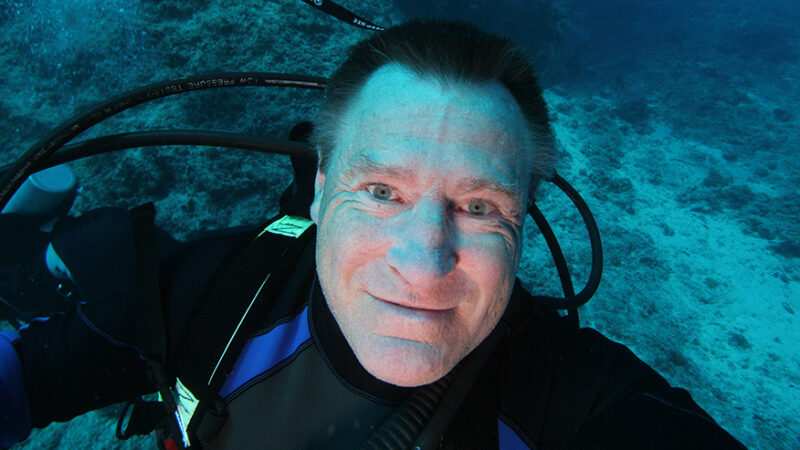
Paddy Ryan’s life and times as a Fiji wildlife photographer
Fiji travel news.

Kevin Sinclair–Holiday Inn Suva’s Chef Extraordinaire
Editor’s note: Kevin Sinclair, the Executive Sous Chef of the Holiday Inn Suva, is a rising star in Fiji’s growing culinary constellation. He’s been with the property for the last...
- WordPress.org
- Documentation
- Learn WordPress

17 Top-Rated Tourist Attractions in Fiji
Written by Karen Hastings Updated Apr 6, 2023
Author Karen Hastings has been visiting Fiji for more than three decades. She was married here, and has since returned many times with her family.
Famous for its friendly people and heavenly tropical islands, Fiji is the quintessential South Pacific paradise. With more than 300 islands to choose from, you'll find plenty of rewarding things to do.
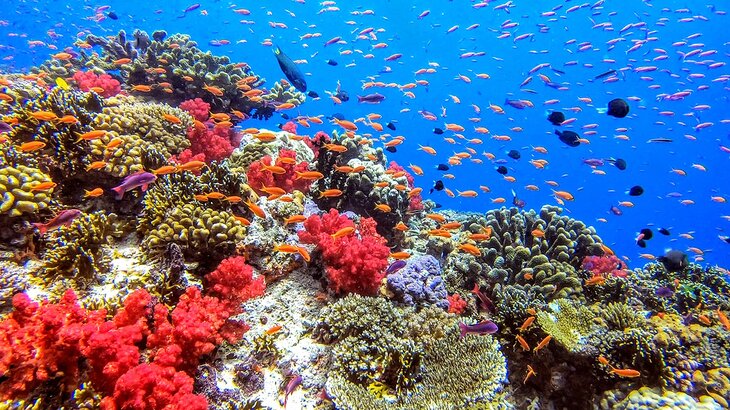
Viti Levu: Suva, on the largest island of Viti Levu, is the capital. Nadi, on the western side of the island, is Fiji's main international gateway and lies near the large resorts of the Coral Coast and Denarau Island. Not far from here, you can stroll along sand dunes to ancient archeological sites, soak in therapeutic mud pools and hot springs, dive with sharks in Beqa Lagoon, and raft the Upper Navua River through pristine rainforests.
Outer Islands: The outer islands have their own alluring natural attractions. The Mamanuca Islands are home to one of the world's top surf breaks, and in other island groups, you'll find mystical caves, Fiji's only UNESCO World Heritage Site, and the world's fourth largest barrier reef.
Fiji also has great accommodation options, from family focused resorts to all-inclusive resorts. Fijians also love children, so this is a great destination for families.
For ideas on the best places to visit in this idyllic island paradise, read our list of the top attractions in Fiji.
Blue Lagoon Cruise: Mamanuca and Yasawa Islands
Denarau island, kula wild adventure park, viti levu, beqa lagoon, viti levu, navua river, viti levu, garden of the sleeping giant and sabeto hot springs, viti levu, pacific harbour, viti levu, great astrolabe reef, kadavu, cloudbreak, mamanuca islands, natadola beach, viti levu, sri siva subramaniya temple, nadi, sunset dinner cruise to robinson crusoe island, sigatoka sand dunes national park, viti levu, fiji museum, viti levu, levuka, ovalau, bouma national heritage park, taveuni island, sawa-i-lau caves, yasawa islands, fiji - climate chart, map of fiji - top-rated tourist attractions.
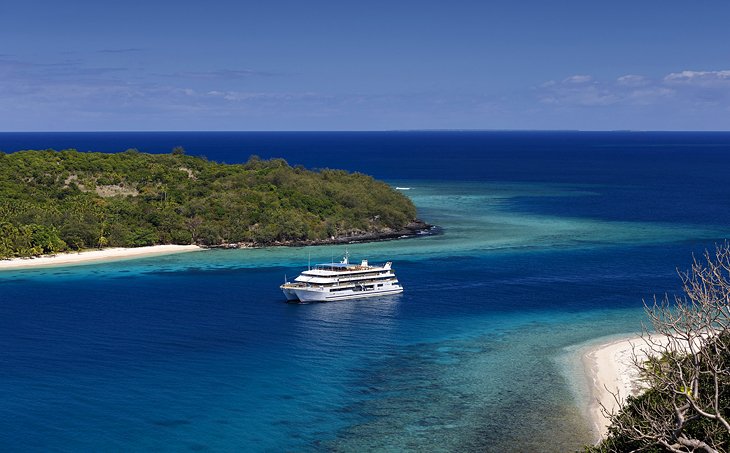
If you want to sample several of Fiji's best islands on your holiday, a Blue Lagoon Cruise is a great option. These intimate 68-passenger cruises offer a choice of three different itineraries in the picture-postcard Yasawa and Mamanuca Islands. This company offers an adults-only experience, making it a truly romantic experience for couples. If you're traveling with kids, though, you should look elsewhere.
You can choose from three-, four-, or seven-night cruises . All have flexible itineraries that are subject to change, depending on the weather and local festivities. Daily schedules incorporate a maximum of four hours of cruising each day, so you can spend most of your time sightseeing around the islands.
Activities include swimming, diving, and snorkeling in the silky waters; picnics on uninhabited islands; fishing; and visiting local villages and attractions, like the Sawa i lau Caves. Cruises depart from Port Denarau.
The Yasawa Flyer also offers daily voyages through the Yasawas from Denarau Marina.
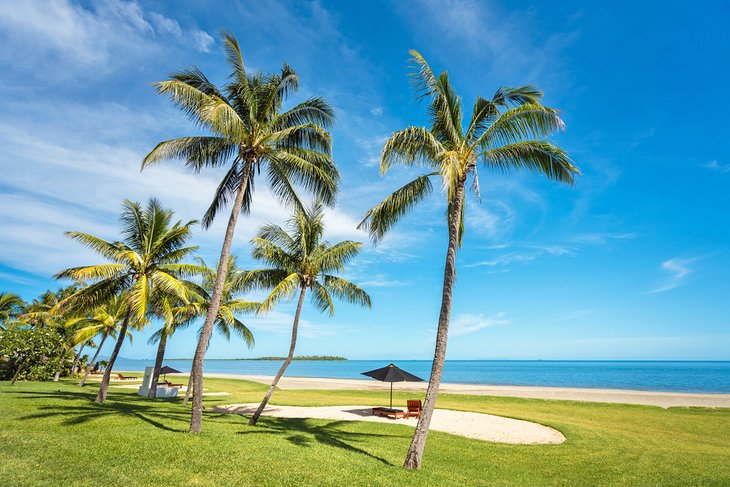
Are you craving a shopping fix, a hearty meal, a game of golf, or a pampering spa treatment? You can do all this and more on a visit to Denarau Island. This tourist hot spot is a one-stop hub for shopping, dining, and Fiji entertainment, about 20 minutes from Nadi's international airport.
If your main goal is to stock up on souvenirs, you'll find everything here, from the ubiquitous wooden cava bowls and colorful Fijian sarongs to jewelry, surf wear, and shell knick-knacks.
Feeling peckish? Choose from different 40 restaurants, serving everything from pizza and American-style burgers to Fijjian food and Indian cuisine. Before or after you dine, you can also catch some free entertainment. Every evening between 6:30 and 7:30, fire dancers light up the outdoor area, and Polynesian and Melanesian dancers add another welcome dash of Fijjian culture.
Port Denarau Marina here is the launching point for a range of tours and activities. Snorkeling, sailing, jet skiing - you can book it all here. The marina is also the departure point for cruises to other islands, like the Mamanuca and Yasawa chain.
Golfers can tee off at the palm-studded 18-hole course, with mesmerizing views of the sea, and if your muscles are sore after a round or two, book a relaxing massage at the spa.
If you're wondering where to stay in Fiji, Port Denarau is also home to nine hotels and resorts, including the Sheraton Denarau Villas and the Hilton Fiji Beach Resort & Spa .
Getting around is easy, too. The handy Bula Bus will whisk you from your Denarau Island resort to all the shopping, dining, and entertainment areas.
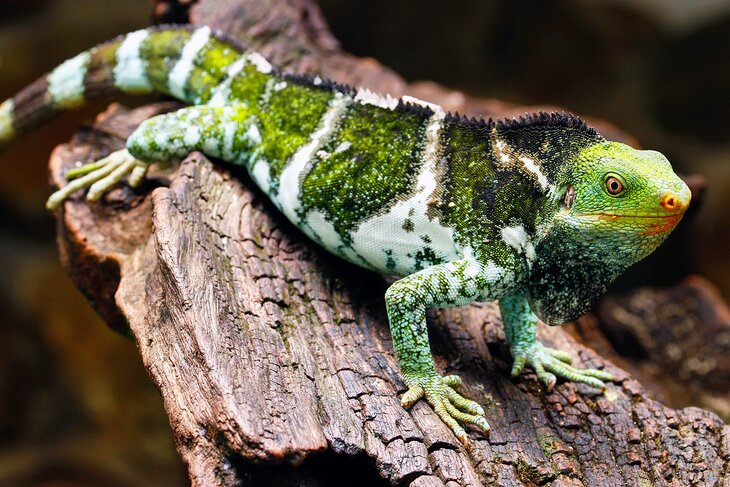
Looking for a mix of nature and adventure? Head to Kula Wild Adventure Park in Sigatoka. Here, you can hold the rare Fijian crested iguana, capture close-up images of Fiji's beautiful native birds, and learn about captive breeding programs for some of the country's endangered species.
Wooden boardwalks thread through more than 12 acres of forest along the valley floor and canopy, where you can see tropical plants; lizards; snakes; and native birds, including doves, parrots, and waterbirds. Marine exhibits house tropical fish, colorful soft coral, and sea turtles. If you time it right, you can even hand-feed baby sea turtles.
If you prefer more of an adrenaline buzz, take a ride through the forest on the Roller Coaster Zip Rail or zoom down one of the waterslides. Splash pools also tempt younger visitors on hot days.
This is a fun place to visit for critter-loving kids and adults alike.
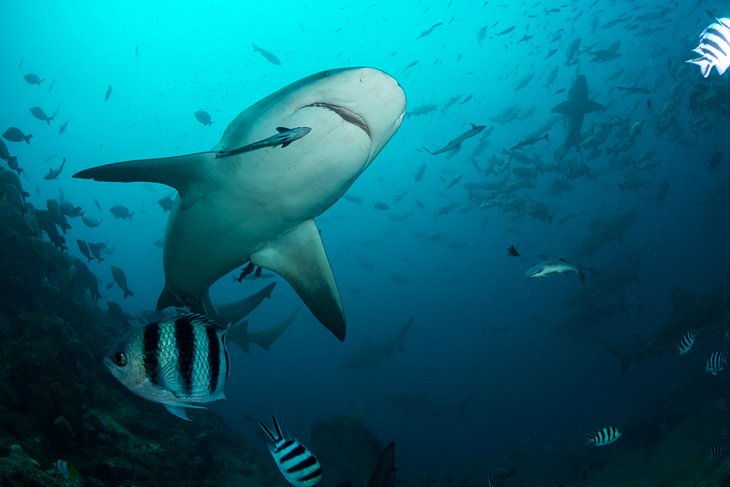
About 144 kilometers southeast of Nadi, off Pacific Harbour, Beqa (pronounced "Benga") Lagoon lures avid divers and adventure seekers, many of whom come here to experience the Beqa Lagoon Shark Dive .
With stringent safety measures in place, expert local dive operators offer exhilarating face-to-face encounters with these much-feared creatures in their natural habitat. Among the many species you can see are bull sharks, whitetip, blacktip reef sharks, and even tiger sharks.
If you're looking for a more subdued underwater experience, the lagoon is home to more than 100 dive sites. Coral bommies, pinnacles, and wrecks showcase an impressive diversity of soft corals and tropical fish, and most sites are in relatively shallow waters not far from shore. This is a great place to dive if you're visiting Viti Levu and don't have time to travel to reefs around the smaller islands.
Beqa Island , just offshore, is home to the Sawau tribe, who started the famous Fiji tradition of fire walking, and you can still watch this centuries-old tradition at ceremonies in nearby resorts.
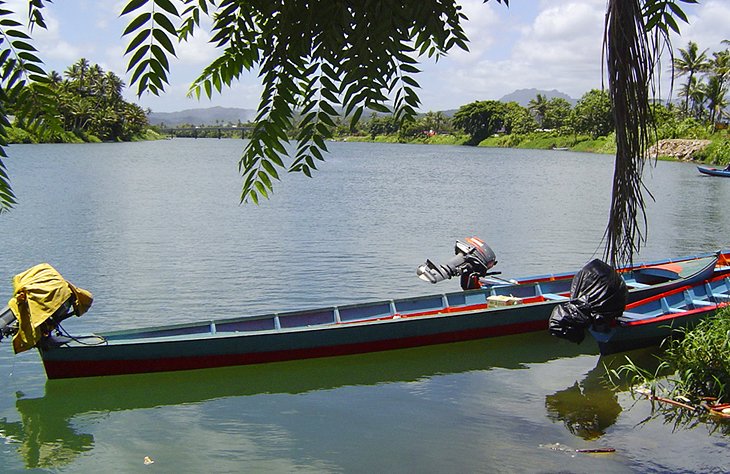
The Navua River on Viti Levu flows for 65 kilometers from the Viti Levu highlands to the south coast through magnificent scenery, with lush rainforests, waterfalls, and rugged canyons.
You can paddle the Upper Navua River in kayaks or canoes, float along on a bilibili (bamboo raft), or ride the whitewater rapids (Grade II to Grade III) on an inflatable raft.
Wildlife such as fruit bats, herons, and native parrots are often spotted along the way, and you can combine a river experience with cultural tours to local villages and participate in traditional kava ceremonies.
This tangled, tropical wilderness offers a taste of the real Fiji — especially if you are based at one of the manicured resorts of the Coral Coast, Denarau Island, and Pacific Harbour.
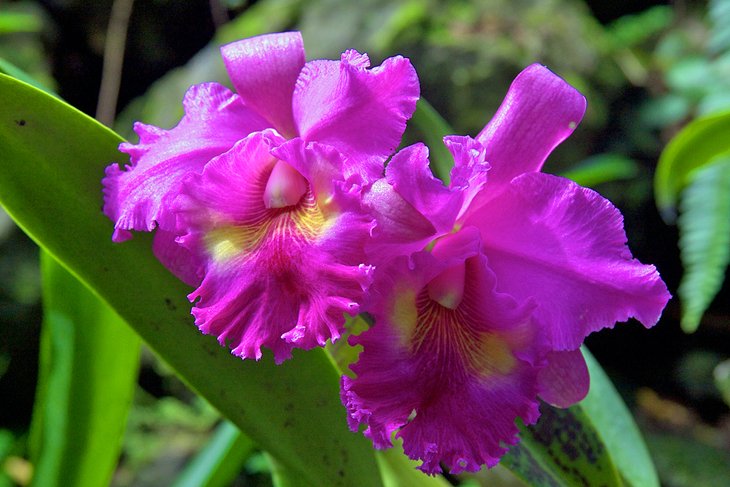
Less than 30 minutes by car from Nadi, snuggled in the lush foothills of their namesake mountain peak, the Garden of the Sleeping Giant is a rewarding day trip — especially if you're a green thumb.
Once the private collection of the late actor Raymond Burr of Perry Mason fame, these gorgeous gardens spotlight more than 2,000 species of orchids, as well as a tranquil lily pond replete with tadpoles and frogs.
You can explore the gardens on covered boardwalks that wind through 20 hectares of lawns and native forest. Swings and hammocks invite you to linger and enjoy the peace and serenity of this verdant valley, and free guided tours share fascinating details on the history of the gardens.
After admiring all the botanical beauties, visit the nearby Sabeto Hot Springs and Mud Pool . Here, you can indulge in one of the more unusual things to do in Fiji: a slimy, yet strangely soothing, mud bath. Don't worry — after coating your body in mud, you can clean off with a soak in the mineral pools and enjoy a relaxing massage.
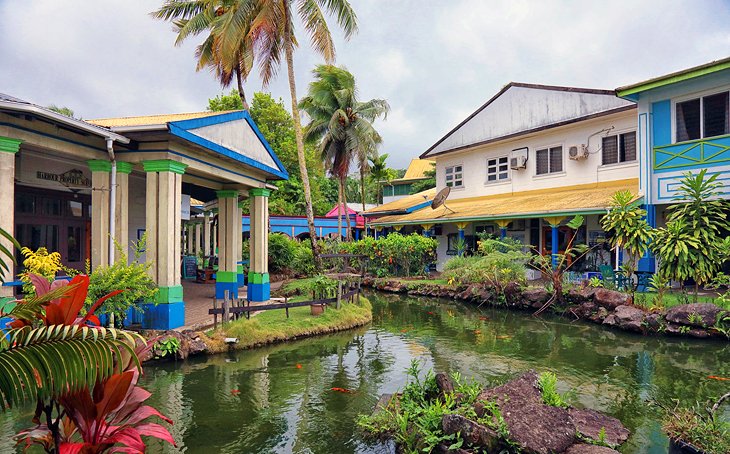
Less than 50 kilometers from Suva, Pacific Harbour is the self-proclaimed "Adventure Capital of Fiji." This upscale enclave of vacation homes and resorts began its life as a residential canal development in the 1970s, and today, it's evolving into a hot spot for adrenaline sports.
Popular things to do here include river rafting on the nearby Upper Navua River , ziplining, jet skiing, surfing, 4WD adventures, and a heart-pumping dive with bull sharks in Beqa Lagoon .
If you prefer more low-key activities, Pacific Harbour is also home to a popular arts village with restaurants, souvenir stalls, and cultural shows.
Accommodation options range from budget hostels to luxury resorts, and the brand new Pacific Palm Marina is underway, with restaurants, upscale residences, a golf course, and spa.
About 20 minutes by car from Pacific Harbour, Kila Eco Adventure Park offers ziplining, ropes courses, and nature walks.
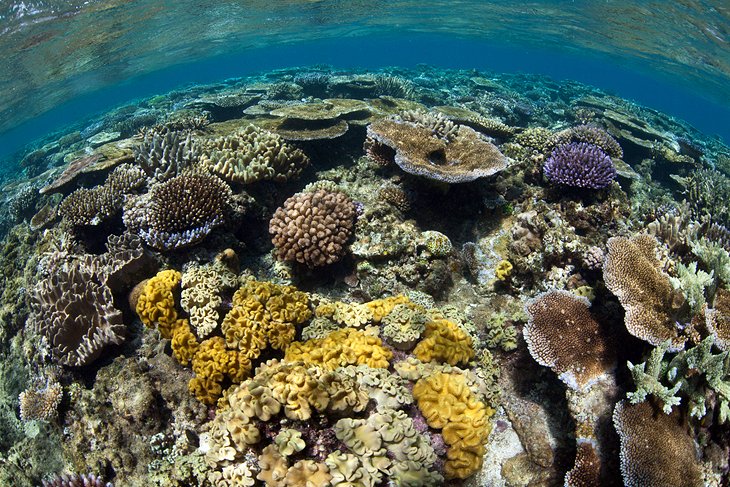
Fringing Fiji's fourth largest island, Kadavu, and other small islands in the Kadavu group, the 100-kilometer-long Great Astrolabe Reef is the fourth largest barrier reef in the world .
Divers come here to submerge themselves in an underwater wonderland of caverns, tunnels, pinnacles, drop-offs, kaleidoscopic hard and soft corals, and tropical fish.
Most of the dive sites are easily accessible by boat from the southern shores of Kadavu, the currents are typically moderate, and visibility ranges from 10 to 40 meters. The dives cover all skill levels, from beginner to advanced. Snorkelers can also enjoy the rich marine life here and the chance to swim with manta rays.
Anglers can fish in designated areas — the reef is known for its abundance of billfish species, as well as tuna, mahi mahi, and giant trevally.
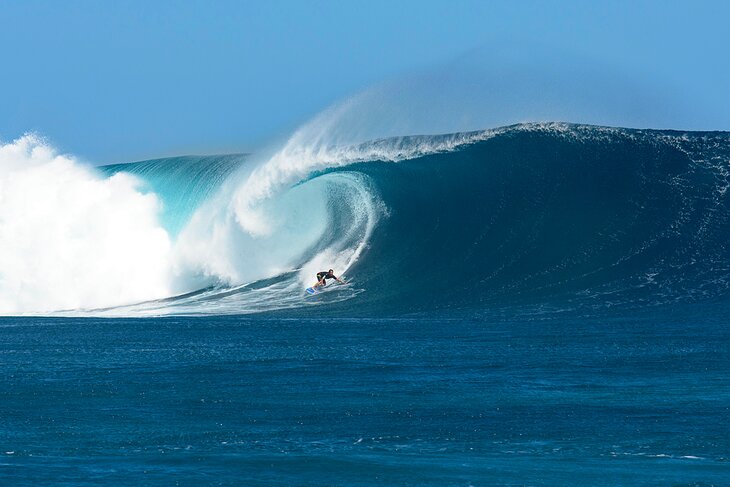
Frequently gracing the list of the world's best and most challenging waves for surfers, Cloudbreak lies on a sheltered reef about two kilometers from Tavarua Island Resort, near Namotu Island Resort, in the Mamanuca Islands.
This internationally renowned left reef break speeds up as it barrels over a shallow reef, dumping a massive volume of water, and it's surfable during all tides. Depending on conditions, waves vary in height from two to 20 feet, and access is usually via a Jet Ski and tow board.
Not surprisingly, the wave is best attempted by expert surfers only. In 2016, Hawaiian surfer Aaron Gold almost drowned riding this break.
The best swell comes from the south/southwest, thanks to the eastern trade winds, which typically blow between March and October.
Tavarua and nearby islands offer access to eight main surf breaks, including Swimming Pools, Tavarua Rights, and Namotu Left.
Besides Tavarua and Namotu, other resorts that offer access to Cloudbreak include Funky Fish Beach Resort ; Plantation Island Resort ; and the ultimate couples' resort, the adults-only Lomani Island Resort .
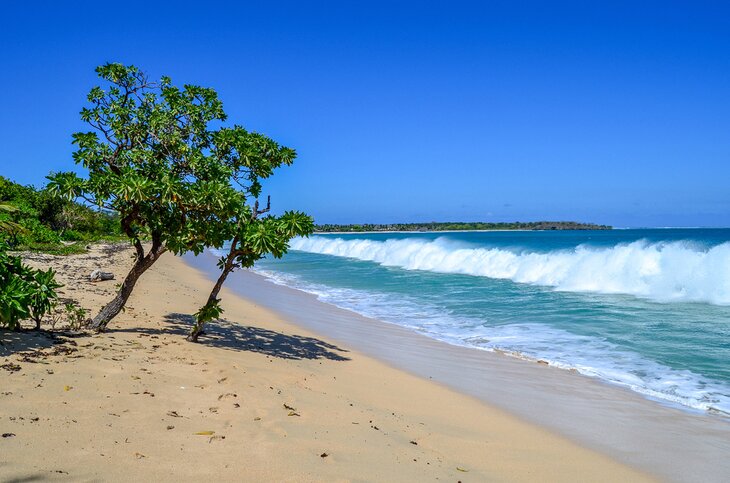
Located on the main island of Viti Levu, Natadola Beach has been repeatedly voted one of the best beaches in Fiji. This accolade is well earned due to its soft, cream-colored sand and numerous shade-giving palms.
There are plenty of activities to enjoy at this beautiful beach. From snorkeling to horseback riding to just plain beachin, you won't be bored. Those who like to surf are in luck. The rough water at this popular beach offers up optimal conditions for riding the waves .
That said, the surf here can be quite strong, so if you're traveling with children, be sure to hold on tight and beware of the undertow.
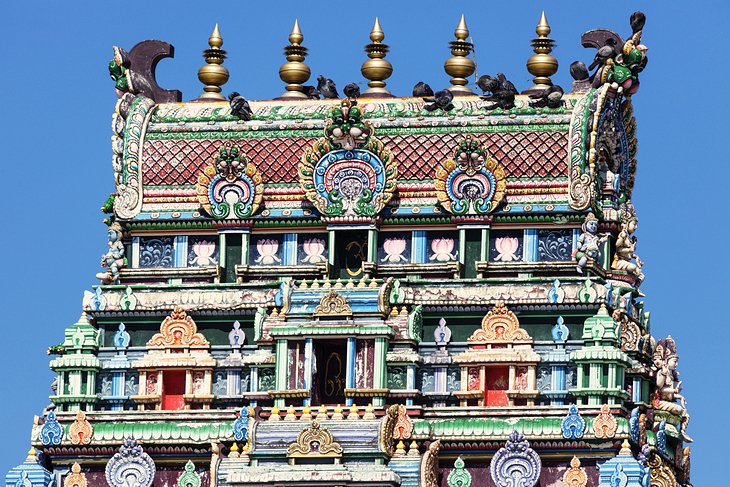
One of the top tourist attractions in Nadi, the rainbow-hued Sri Siva Subramaniya Temple is the largest Hindu temple in the Southern Hemisphere and draws a steady stream of devotees, as well as tourists who come here to admire the impressive Dravidian architecture.
Artists traveled from India to paint the temple and work on its colorful ceiling frescoes. The temple is dedicated to the God Mungan, depicted by the wooden statue from India housed in the main temple.
Be sure to follow the dress code when visiting here, (cover up and take your shoes off), and note that photographs are off limits once you enter.
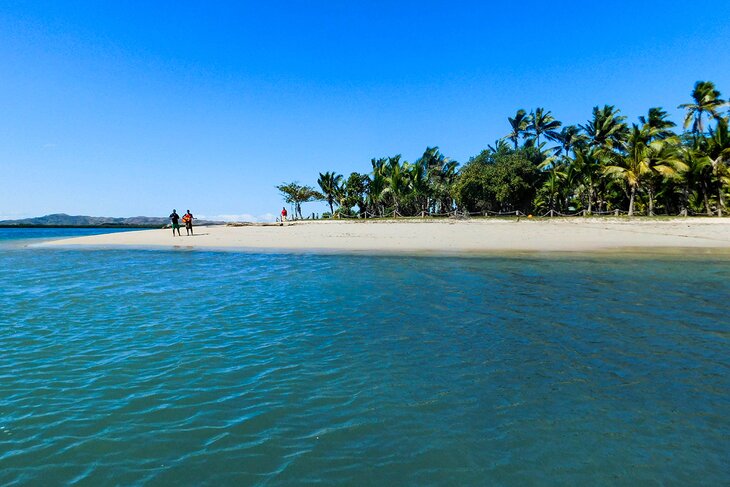
There's something extra special about visiting a private, secluded island. When that isle is called Robinson Crusoe Island, you can rest assured you'll have an experience to remember. This remote beauty boasts a soft sandy beach, multiple water sports, and a relaxing vibe that can't be beat.
If you want to stay longer, no problem. The exclusive Likuri Island Resort welcomes families and couples alike to enjoy the relaxing facilities in this romantic island paradise. But you'll have to find your own way home the next day.
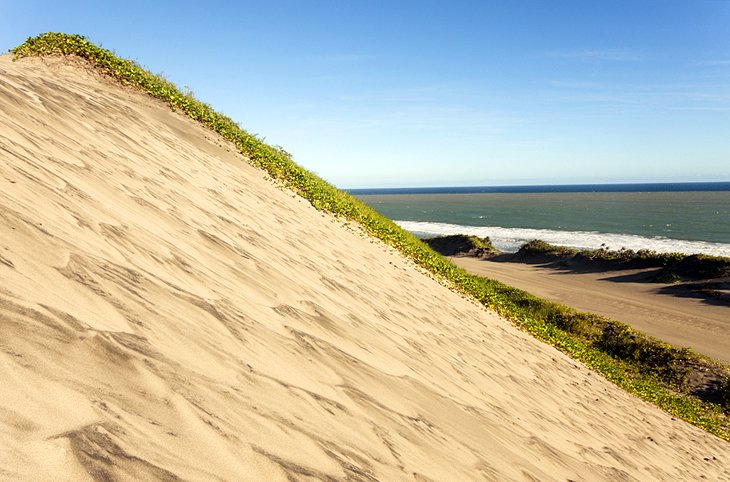
About 60 kilometers south of Nadi, Sigatoka Sand Dunes National Park was the country's first national park, established to protect this fragile ecosystem of coastal dunes near the mouth of the Sigatoka River.
Formed over thousands of years, the dunes range in height from 20 to 60 meters, with breathtaking views of the surf from the highest peaks.
To explore the park, you can choose from two self-guided walks: a one-hour walk through a forest to the beach or a two-hour walk along the ridgeline. Highlights include visiting the archaeological sites to see ancient Lapita artifacts, including more than two-thousand-year-old pottery, stone tools, and one of the biggest burial sites in the Pacific.
Bird-watching is also popular, and the small visitor center displays some interesting artifacts found at the site, as well as information about its history and ecology.
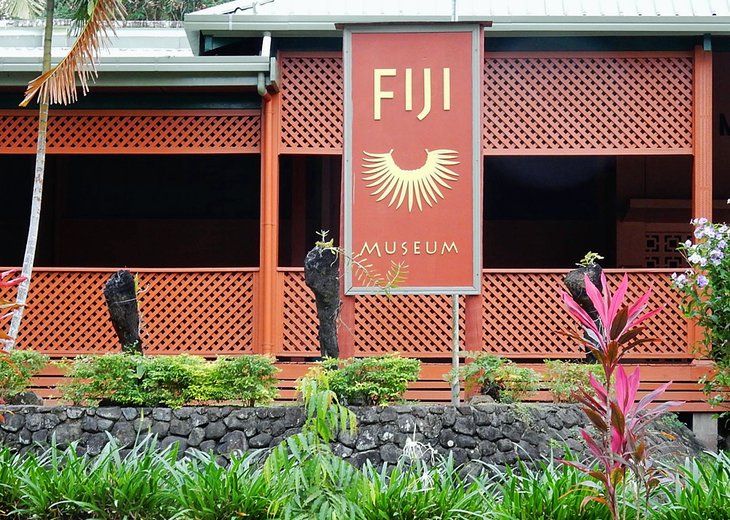
You can learn all about Fiji's fascinating culture and history at the small Fiji Museum in central Suva, set within Thurston Gardens . An hour or two here will give you a good overview of the country's history and culture.
Exhibits cover the culture of the Indigenous Fijians, British colonial history, the influence of the country's large Indian population, and Fiji's natural history.
In the maritime exhibits, double-hulled Fijian canoes and a bilibili (bamboo raft) are on display, as well as the rudder from the HMS Bounty. Other highlights include exhibits on the practice of cannibalism, shards of pottery found at the Sigatoka Dunes archeological sites, and works by contemporary Fijian artists.
After admiring all the exhibits, you can relax with a picnic under the palms and fig trees in the surrounding botanical gardens. The museum is currently undergoing a major renovation with plans to reopen "soon." In the meantime, their office, gift shop, and library are open from 8am to 4:30pm.
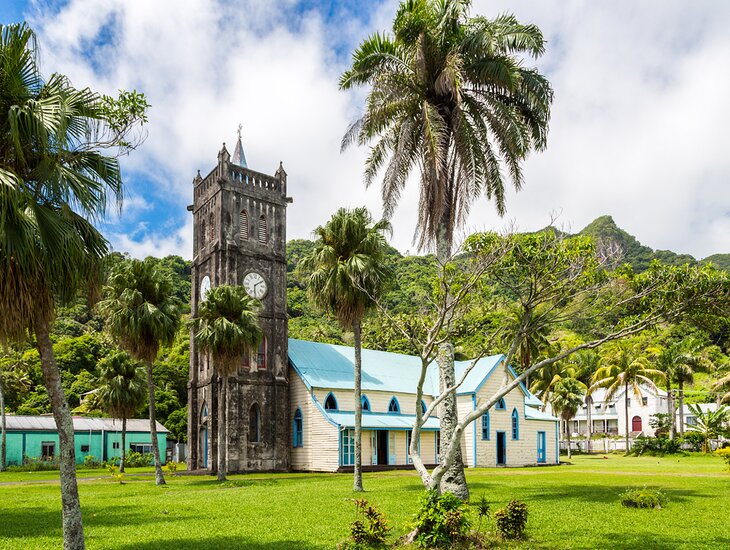
Fiji's only UNESCO World Heritage Site , Levuka is the capital of Ovalau, the main island of the Lomaiviti group, and it was also the first colonial capital of Fiji. This is where the first Europeans settled in the early 19th century, and its historic center, with old wooden buildings, achieved World Heritage status in 2013.
Today, the town is not a thriving tourist destination, rather, it's a quaint window into old Fiji, nestled amid mango trees and coconut palms.
Highlights include the Royal Hotel , opened in the 1860s and still operating today as the oldest hotel in the South Pacific ; Sacred Heart Cathedral and Presbytery from the 1860s; and the Morris Hedstrom bond store.
Most visitors to Levuka organize homestays with the locals and linger a while to soak up the laid-back ambience of this friendly town.
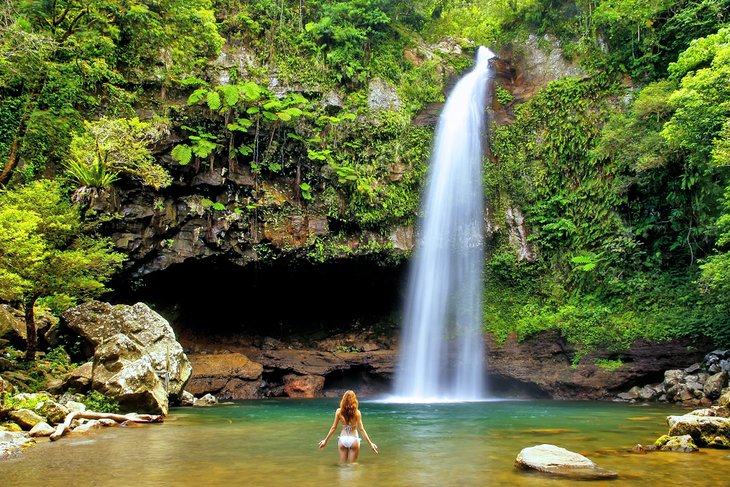
Nature lovers, hikers, and birders can soak up some of Fiji's lush natural beauty in Bouma National Heritage Park on the island of Taveuni.
Established in 1990, the park encompasses about 150 square kilometers of rainforest, with rare tropical plants and an impressive diversity of birds, as well as four villages that are each responsible for managing portions of the park.
You can snorkel in the marine park at Waitabu; hike through the rainforest to ancient ruins near Vidawa; and kayak or stroll the Lavena Coastal Walk , stopping at waterfalls for a swim along the way.
A particular highlight of the park are the Tavoro Waterfalls , with three sets of falls maintained by the nearby Korovou village, where you can swim in the cool volcanic pools and capture photos of the veil-like streams of water gushing down the rockfaces.
The park is also home to Lake Tagimaucia , a crater lake, where the rare Tagimaucia flower blooms, and De Voeux Peak , which offers spectacular views from its 1,195-meter summit.
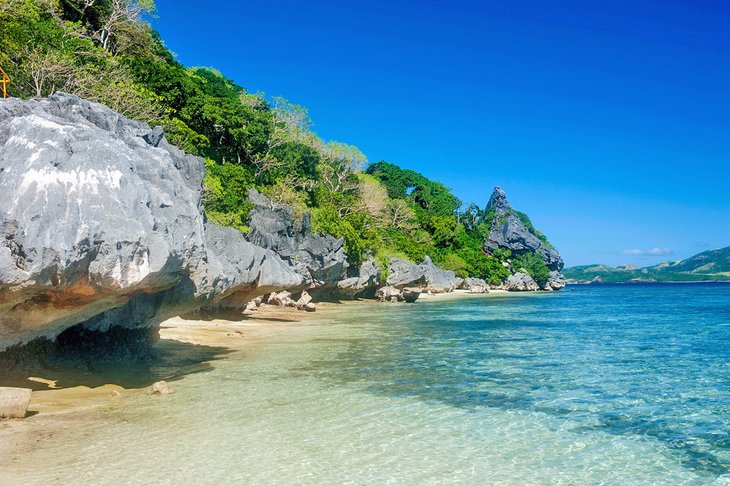
In the northern Yasawa Islands, the mystical Sawa-i-Lau Caves were sculpted by wind and waves over thousands of years. They are famous as the site of scenes from the famous Brooke Shields movie, The Blue Lagoon .
Bathed in light, the first limestone cavern is easy to access, and you can swim in the cool, crystal-clear water of the deep pool and admire the interesting limestone formations.
To access the inner cave, you have to swim through an underwater tunnel. Locals believe that this inner cavern is the heart of the Yasawas, and that the caves are the final resting place of the 10-headed Fijian God, Ulutini.
Note that the second cave is only accessible when the tide allows. Guides are highly recommended.

More on Fiji
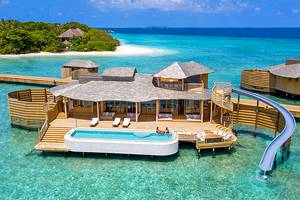
Travel Guide Fiji
Book your individual trip , stress-free with local travel experts
Select Month
- roughguides.com
- Australasia
- Travel guide
- Itineraries
- Travel Advice
- Accommodation
Plan your tailor-made trip with a local expert
Book securely with money-back guarantee
Travel stress-free with local assistance and 24/7 support
Sun-drenched beaches, turquoise lagoons, swaying palm trees – Fiji supplies all the classic images of paradise. No wonder, then, that every year thousands of travellers come to this South Pacific archipelago for the ultimate island escape. With over three hundred islands to choose from, Fiji is an amazingly versatile destination. Whether you’re after a luxury honeymoon retreat, a lively backpacker island or a family-friendly resort you won’t be disappointed. You’ll also find a warm, hospitable people, an intriguing blend of Melanesians, Polynesians and Indians. Ready to explore? Check out our Fiji travel guide!
What makes Fiji so popular?
Best things to see and do in fiji, best fiji islands to visit.
With a reliable tropical climate, a good tourist infrastructure, English as its main language and no jabs or pills to worry about, travelling in Fiji is as easy as it gets. As the hub of South Pacific tourism, the country attracts over half a million visitors a year, mostly from Australia and New Zealand , its largest “neighbours” lying over 2000km southeast. Of the northern hemisphere travellers who arrive, many are backpackers from Europe or surfers and scuba divers from North America .
While it can be tempting to spend your whole time in Fiji sunbathing and sipping cocktails from coconuts, there are plenty of activities to lure you away from the beach. Within a ten-minute boat ride of most resorts you can find yourself snorkelling with dolphins and manta rays or scuba diving at pristine coral reefs.
In addition, at the exposed edges of the reefs are some of the world’s finest and most consistent surfing breaks . Nature lovers are also spoilt for choice, both underwater and on dry land, and wildlife-spotting opportunities are plentiful, whether you’re seeking turtles, exotic birds or 3m-long tiger sharks.
Our authors have island-hopped around Fiji in search of pristine beaches, vibrant markets and memorable sights. They share their personal highlights here.
Visit Navala village
Navala Village is Fiji's most scenic settlement, nestled deep in the highlands of Viti Levu. It boasts over two hundred traditional thatched bures, offering a unique glimpse into Fijian culture. The mountainous hinterland south of Ba town provides a stunning route between Nadi and North Viti Levu, with Navala being the highlight.
To visit, greet the first person you meet on the roadside. They will guide you to the village headman, where you pay an entry fee that helps maintain the village. Walking through Navala, you'll admire the elaborately designed rooftops of the chiefly bures, all neatly aligned around the village green.
Surrounded by grass-covered mountains, Navala hides secret caves used by townsfolk during times of conflict.

Traditional houses of Navala village, Viti Levu island, Fiji © Don Mammoser/Shutterstock
Relaxing at Savusavu
Sipping an ice-cold beer while overlooking the stunning bay at sunset is a must in Savusavu. This charming one-street town on Vanua Levu is nestled between rolling hills and a shimmering bay. Although not a typical beach spot, it’s a favourite anchorage for yachts and offers excellent scuba diving in the nearby Namena Lagoon.
Savusavu’s awaterfront boasts several excellent restaurants and bars. Enjoy peaceful walks in the Savusavu Hills, snorkelling at Lesiaceva Point, and game fishing around the bay. It’s an ideal destination for a short, relaxing stay.

Savusavu provides safe anchorage for yachts visiting Vanua Levu Island, Fiji © Bron Hogan/Shutterstock
Kayaking adventures in Fiji
What could be better than paddling around Fiji's islands, stopping at fishing villages, and camping under the stars?
Most resorts offer complimentary sea kayaks for guests. Always wear a life jacket and inform someone of your plans in case of dangerous currents or sudden storms.
Two companies, South Sea Ventures and Tamarillo Tropical Expeditions, offer week-long kayaking trips from May to October. These trips include snorkelling in lagoons and camping on beaches or staying in remote fishing villages.
For a shorter adventure, consider a half-day trip along the Lavena Coastline in Bouma National Heritage Park on Taveuni .
Dive into Fiji's vibrant coral reefs
With vibrant coral reefs off almost every beach, Fiji is ideal for slipping on fins and diving in.
Fiji offers superb scuba diving and snorkelling, with colourful, accessible reefs and diverse fish species, including sharks. Diving is excellent year-round, with visibility often reaching 30m (98ft). The best months are October and November, after the trade winds and before the wet season.
Scuba divers will find Fiji’s renowned soft corals most abundant in nutrient-rich channels between the larger islands. Highlights include the Great Astrolabe Reef around Kadavu, Beqa Lagoon off southern Viti Levu , the isolated Bligh Waters between northern Viti Levu and Vanua Levu, and the Rainbow Reef between Vanua Levu and Taveuni.
Make sure to check out all the best things to do in Fiji .

Kayaking at Mamanuca islands ©Shutterstock
Fiji has 332 islands, of which 110 are inhabited. You can imagine it's quite a challenge to chose which island to visit. Luckily, we have selected the best ones.
Fiji’s largest island, Viti Levu is a hub of activity and culture. Home to the capital city, Suva, and the international airport in Nadi, it's the starting point for most visitors. Suva offers a mix of colonial architecture and vibrant markets, perfect for those interested in history and local culture. The Coral Coast, located on the southern side, boasts beautiful beaches and luxury resorts, ideal for relaxing by the sea.
Adventure seekers can head to Pacific Harbour, known as the "Adventure Capital of Fiji," for activities like white-water rafting, zip-lining, and shark diving. Additionally, the Sabeto Hot Springs and Mud Pool near Nadi provide a unique spa experience, while the Garden of the Sleeping Giant offers a peaceful retreat with its lush orchid gardens. With its diverse landscapes and activities, Viti Levu caters to all types of travellers.

Popular Natadola Beach in Viti Levu Island, Fiji © Nina Janesikova/Shutterstock
Vanua Levu , Fiji's second-largest island, is a paradise for those seeking a more relaxed and authentic experience. The island’s main town, Savusavu, is a charming, small town nestled between rolling hills and a pristine bay. Known as "Fiji's Hidden Paradise," Savusavu offers excellent opportunities for snorkelling and diving in the Namena Marine Reserve, where vibrant coral reefs and diverse marine life await.
The island's interior is a haven for nature lovers, with lush rainforests, hot springs, and waterfalls to explore. One of the highlights is the Waisali Rainforest Reserve, where you can hike through dense jungle and spot exotic birds and plants. Vanua Levu's laid-back atmosphere, combined with its natural beauty and outdoor activities, makes it a perfect destination for eco-tourists and those looking to escape the more touristy spots.
Known as the "Garden Island" of Fiji, Taveuni is famed for its lush vegetation and stunning waterfalls. The island is a haven for nature enthusiasts, offering numerous hiking trails, including those in the Bouma National Heritage Park. The park is home to the breathtaking Tavoro Waterfalls, where you can swim in crystal-clear pools surrounded by tropical rainforest.
Taveuni is also renowned for its diving, with the Rainbow Reef and the Great White Wall providing some of the best underwater experiences in the world. These dive sites are teeming with colourful corals and a diverse array of marine life. In addition to its natural attractions, Taveuni offers cultural experiences such as visits to traditional Fijian villages, where you can learn about local customs and traditions. The island's untouched beauty and tranquil atmosphere make it an ideal destination for those seeking a blend of adventure and relaxation.

Wainibau, Lavena Coastal Walk, Taveuni Island, Fiji © Don Mammoser/Shutterstock
Mamanuca Islands
The Mamanuca Islands are a group of small, idyllic islands located west of Viti Levu. Known for their stunning beaches, clear blue waters, and vibrant coral reefs, they are a favourite destination for beach lovers and water sports enthusiasts. Many of the islands are home to luxury resorts, offering top-notch amenities and services. Activities in the Mamanucas include snorkelling, diving, sailing, and surfing.
The islands are also famous for their role in movies like "Cast Away," adding a touch of Hollywood glamour to your visit. For a unique experience, visit Cloud 9, a floating bar and pizzeria where you can relax with a drink in hand, surrounded by the turquoise ocean. With their postcard-perfect scenery and abundance of activities, the Mamanuca Islands are perfect for a tropical getaway.
Kayaking at Mamanuca ©Shutterstock
Yasawa Islands
The Yasawa Islands , a chain of 20 volcanic islands, are known for their dramatic landscapes and secluded beaches. This remote archipelago offers a more off-the-beaten-path experience, with fewer tourists and unspoiled natural beauty. The islands are perfect for island-hopping adventures, with each island offering its unique charm. One of the highlights is the Sawa-i-Lau Caves, where you can swim in a natural underground pool surrounded by ancient limestone formations.
The Yasawas are also ideal for hiking, with trails that lead to panoramic viewpoints overlooking the islands and ocean. Snorkelling and diving are popular activities here, with vibrant coral reefs and abundant marine life. The local Fijian villages in the Yasawas offer cultural experiences, allowing visitors to engage with the warm and welcoming island communities. The Yasawa Islands provide a perfect blend of adventure, relaxation, and cultural immersion.

Yasawa Islands ©Shutterstock
Discover more places in Fiji

- Rural Viti Levu Travel Guide
- Suva and around Travel Guide
- Vanua Levu and Taveuni Travel Guide
Travel advice for Fiji
From travel safety to visa requirements, discover the best tips for visiting Fiji
- Culture and Etiquette in Fiji
- Eating and drinking in Fiji
- Travel Health Fiji
- Sports and Outdoor activities in Fiji
- Travel Tips Fiji for planning and on the go
- How to get to Fiji
- Getting around Fiji: Transportation Tips
- Shopping tips for Fiji
- Travelling with children in Fiji
- Best time to visit Fiji
The Rough Guides to Fiji and related travel guides
In-depth, easy-to-use travel guides filled with expert advice.

Find even more inspiration for Fiji here

Planning your own trip? Prepare for your trip
Use Rough Guides' trusted partners for great rates

written by Andy Turner
updated 29.05.2024
Ready to travel and discover Fiji?
Get support from our local experts for stress-free planning & worry-free travels.
- Where to stay
- Travel advice
The 9 best places to visit in Fiji

Oct 4, 2023 • 6 min read
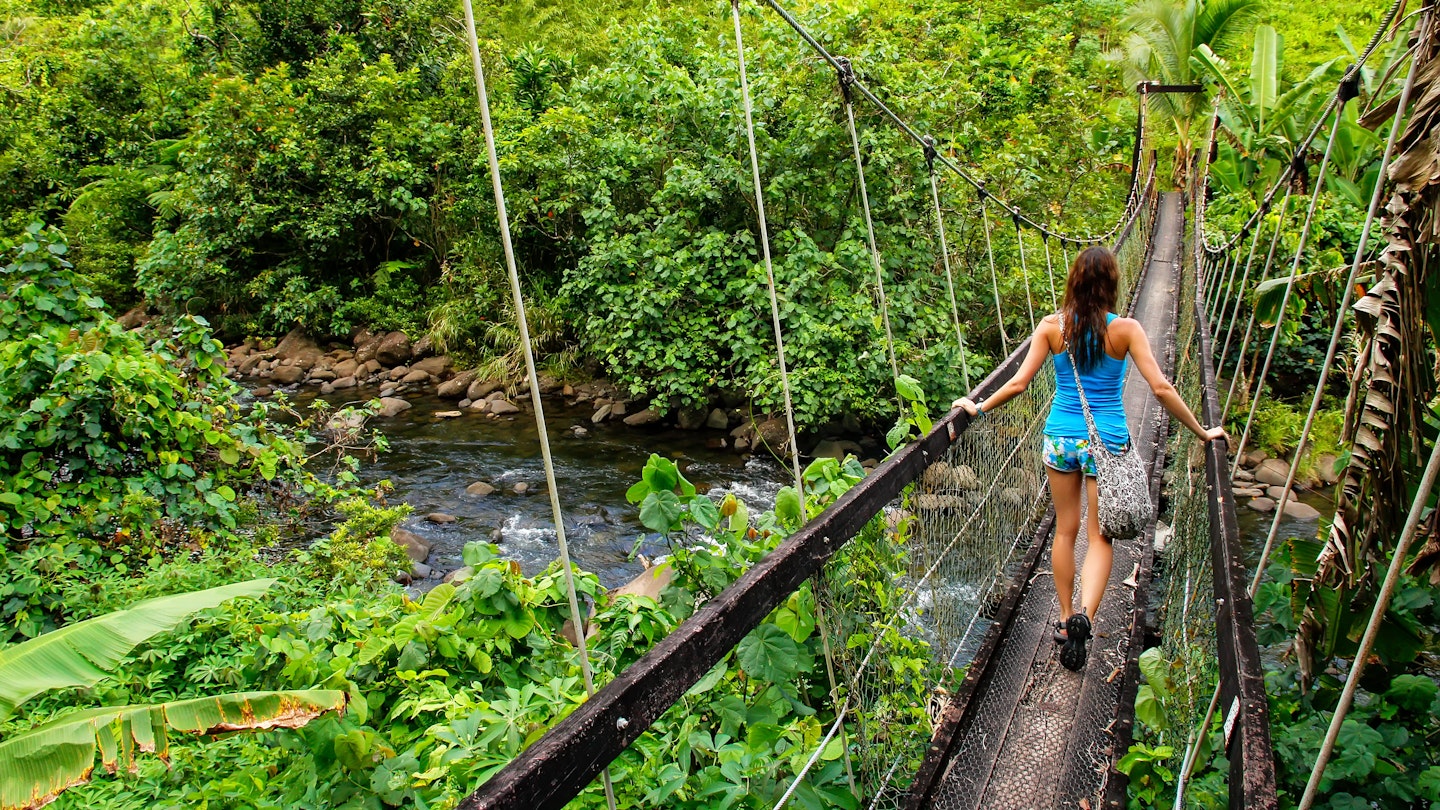
Go beyond the beautiful beaches and discover the best places to visit in Fiji © ©Don Mammoser / Shutterstock
Pristine white sand beaches, aquamarine waters and a lush volcanic landscape – arriving in Fiji truly feels like you've discovered paradise.
This far-flung archipelago, made up of more than 300 islands, has a rich culture with delicious food and a joie-de-vivre attitude at its heart. Start planning your trip now with our shortlist of the best places to visit in this picture-perfect corner of the world.
Best place for multicultural Fiji
If you're flying into Fiji, you’ll see Nadi from the air. This pint-sized city is located just a short drive from the international airport and is a great spot to kick off your Fijian adventure. A mix of stores in a rainbow of colors lines the roads, with everything from electronics to handicrafts on offer.
The covered market is a real treat for the senses, with an array of local produce on offer. Another must-visit spot in the city is the spectacular Sri Siva Subramaniya Hindu temple , which is located downtown at the southern end of the main road. This spectacular temple, the largest in the Pacific, features intricate carvings that could keep you captivated for days. This is a good place to start your holiday before making your way around Fiji .
Local tip: Before entering a Hindu temple, always seek permission and remove your shoes. Photography is generally acceptable outside the temple but don't take photos inside – be respectful and put your camera away.
2. Yasawa Islands
Best region for stunning scenery
Yasawa means "heaven" in Fijian and this string of islands is certainly heavenly. The archipelago, located in the northwest, comprises around 20 islands of varying size with palm-lined beaches, aquamarine waters and dramatic topography being the running theme. Despite their remote location, the majority of the islands are inhabited and many feature hotels.
The Yasawa Flyer ferry departs daily from Port Denarau Marina close to the airport and stops at more than 12 of the islands. South Sea Cruises also runs ferry services and excursions in the area.

3. Nanuku Resort
Best place for ultimate luxury
Elevate your Fiji trip by booking into the blissful confines of the five-star Nanuku Resort . This award-winning hotel on the southern edge of Fiji’s main island makes for a dreamy setting, with villas and apartments enveloped by lush foliage and a 3.2km (2-mile) white sand beach fringing the property.
The rooms feature an attractive blend of modern and Fijian-styled interiors with amenities including private plunge pools and cinema rooms. The luxe experience continues when it comes to dining – the main restaurant serves up French cuisine with a Pacific twist and, for a special occasion, you can book a dining experience on the shores of the hotel’s private island or its cliffside perch.
4. Denarau Island
Best place to stay for families
Located 20 minutes from the airport, the small island of Denarau is a wonderful option for families – everything you need is on your doorstep. The outcrop, connected to the mainland via a bridge, has been developed into a luxury tourism spot complete with a state-of-the-art marina, five-star resorts, top-notch restaurants and an 18-hole golf course.
It's an apartment hotel, with fully equipped kitchens, dining rooms and lounge areas. Other perks at the property include parking, a swimming pool, babysitting services, a cafe, a gym and a tour desk offering a wide range of day and multi-day trips.
Planning tip: Fancy seeing more of the island and visiting other resorts? All aboard the unmissable Bula Bus – it's the one with the thatched roof.
Best island for perfect holiday shots
Let your cares wash away with a stay on Kuata. This far-flung island, which is part of the Yasawa archipelago , makes for a heavenly retreat with just one hotel (the Barefoot Kuata Island ), secluded beaches, secret caves and some great hiking trails.
The Barefoot resort, which has another location several islands away, features a scattering of luxury safari-style tented rooms and beachfront bures (traditional wood-and-straw huts); there are also dormitories if you’re traveling on a budget. Facilities include an open-air restaurant, a bar and a swimming pool complete with a hammock for some scenic holiday shots. The Yasawa Flyer ferry stops at the island as part of its route.
Detour: Hire a guide and head up Kuata’s volcanic summit climb. It's a strenuous uphill walk but you'll be rewarded with dramatic views. The best times to go are before sunrise and sunset (and not only because it's cooler).

Best for local cuisine
Tuck into an array of mouth-watering dishes at Tukuni . This restaurant boasts a lofty setting overlooking a sweeping bay close to the city of Lautoka on the west coast of the main island and is a community-run operation with local farmers and fishermen supplying the ingredients.
Cooking takes place over an open fire and some popular dishes include ika tavu (smoked fish) and kokoda (marinated fish in coconut milk). There’s also a great selection of vegetarian dishes that include rourou (taro leaves). The Fijian experience doesn’t just extend to the food – the restaurant has a cozy, authentic feel, with handcrafted solid wood furnishings and woven palm wall panels setting the scene.
Local tip : Fijian food offers a unique fusion of flavors with a Pacific take on cuisines from India and beyond. Staples such as sweet potato, cassava and taro are cooked with fish, vegetables and coconut; curries are generally milder and lighter here.
7. Awakening Shark Dive
Best experience for adrenaline seekers
Put your fears to one side and buckle up for an adrenaline-pumping experience you’ll remember for the rest of your life. The Awakening Shark Dive experience is offered by the Barefoot Resort on Kuata Island and it brings you face to face with bull sharks. Experienced divers will lead you out to a spot close to the island where the sharks congregate thanks to efforts to restore the surrounding corals.
Kneel on the ocean floor and stay still while the sharks, which can be up to 3 meters (9.8ft) in length, slink in for a feeding session. Other shark species known to patrol the area include tiger, nurse, lemon, and silver tips.

8. Mount Tomanivi
Best for epic views
Lace up your hiking boots and be prepared to break a sweat for a challenging climb up to the summit of Mount Tomanivi. This jungle-strewn peak on the main island is the highest point in Fiji, measuring 1324 meters (4343ft). The return trek takes around four hours but you'll realize it was worth the effort as you take in the epic views of the surrounding emerald interior and the endless blue beyond.
Adventure company Talanoa Treks runs trips to Mount Tomanivi with local guides, and if you fancy a little more exertion, the company runs a "two peak challenge" with Fiji’s second-highest peak, Mount Batilamu, added to the agenda.
9. Projects Abroad
Best for sustainable travel in Fiji
Help do your bit for the environment while in Fiji and sign up as a volunteer with Projects Abroad . This social enterprise, which has one location in Nadi and another close to the coast in Pacific Harbour, runs a range of volunteer projects that include shark conservation and beach clean-ups.
One of the business’ other focuses is mangrove restoration in a bid to protect natural habitats and stop coastal erosion. Many volunteers offset the carbon footprint of their flight by planting mangrove seedlings in the nursery and to date, more than 6 hectares (15 acres) of mangroves have been planted by Projects Abroad volunteers in Fiji since 2014.
Local tip: Like many other Pacific islands, Fiji is already feeling the effects of climate change. The village of Vunidogoloa was the first to move because of floods and erosion: 32 families relocated to higher land 2km (1.2 miles) away.
This article was first published Nov 24, 2021 and updated Oct 4, 2023.

Explore related stories

Jul 10, 2024 • 7 min read
Few destinations are as evocative as this pair – which is why we asked two expert writers to make the case for each.

Oct 19, 2023 • 7 min read
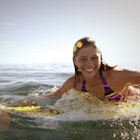
Oct 17, 2023 • 7 min read

Oct 14, 2023 • 4 min read

Oct 13, 2023 • 5 min read

Dec 3, 2021 • 9 min read
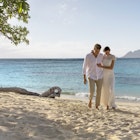
Nov 19, 2021 • 5 min read

Sep 12, 2024 • 7 min read
- Search Please fill out this field.
- Newsletters
- Destinations
- Australia & New Zealand
- Pacific Islands
Planning a Trip to Fiji
Travel Information for Visiting These Friendly South Pacific Islands.
Spread across 18,372 square miles of the South Pacific, and consisting of 333 islands, of which 110 are inhabited, lies the Republic of the Fiji Islands.
While Fiji's landscape is not quite as jade-green as Tahiti's , its waters are equally crystal-clear, making for some of the planet's best diving amid stellar coral formations. Also unlike Tahiti, Fiji is not known for its overwater bungalows (although there are a few), but rather for thatched-roof bures (bungalows) set discreetly in the sand along miles of pristine beaches (where a few famous movies were filmed).
If a trip to Fiji is on your calendar, it's likely you'll be heading there with your significant other. Fiji's secluded private-island resorts are romantic South Pacific hideaways designed with two in mind.
And yet families will also find Fiji welcoming, as some resorts cater to parents and children. Here's what you need to know to plan your visit:
Where Is Fiji?
Fiji's islands are located in the South Pacific, about 11 hours by air from Los Angeles and four hours from Australia. They are divided into several groups.
There are two main islands: Viti Levu, the largest, is home to Nadi International Airport as well as Fiji's capital, Suva; both its southeast coast, known as the Coral Coast, and Denarau Island near Nadi, are lined with resorts.
Vanua Levu, the second largest, is located to Viti Levu's north and is home to a number of resorts catering to divers, as it's flanked by one of the world's longest barrier reefs.
The third largest island is Taveuni, known as the "Garden Island of Fiji" and covered in tropical rainforest. The fourth largest is Kadavu, which is least developed, making it ideal for hiking, bird-watching, and eco-adventure.
The rest of Fiji's islands are divided into groups.
Off the coast of Viti Levu are the Mamanucas, 20 volcanic isles surrounded by reefs and dotted with small resorts.
The Yasawas, which consist of seven main islands and numerous small islets, stretch in a northeasterly direction off of Viti Levu. Here, upscale resorts are popular with couples, budget properties with backpackers, and pristine waters with divers and yachters.
More removed are the Lomaivitis, which consist of seven main islands, one of which houses The Wakaya Club & Spa, one of Fiji's most exclusive resorts.
Fiji is a tropical destination with year-round air and water temperatures of about 80 degrees and two main seasons, summer and winter.
The ideal time to visit is during the clear, dry winter months of May to November. Yet even during the more humid summer months of December to March showers can be sporadic (typically late-afternoon and overnight) and there's usually plenty of sunshine.
How to Get There
Los Angeles International Airport (LAX) is the U.S. gateway to Fiji. The islands' official carrier, Air Pacific, offers daily non-stops to Nadi International Airport (NAN), as well as a codeshare connection to/from Vancouver, and nonstop flights three times a week from Honolulu.
Other carriers flying to Fiji include Qantas, Air New Zealand and V Australia.
How to Get Around
Since Fiji has dozens of islands with resorts, the two main modes of transport are air (via a domestic carrier or private seaplane or helicopter) and sea (via scheduled ferries or private boats). On the main island of Viti Levu, taxis and buses provide land links between Nadi International Airport and the resorts on Denarau Island and along the Coral Coast.
Fiji's domestic air services include Pacific Sun (Air Pacific's regional carrier) and Pacific Islands Seaplanes, and Island Hoppers Helicopters.
Regularly scheduled service is available to both the Mamanucas and Yasawas on ferries or fast catamarans, and some resorts offer private boat transfers.
When booking your resort stay, check its website for details on air and sea transfers.
Is Fiji Expensive?
Yes and no. The larger resorts on Viti Levu, such as the Sofitel Fiji Resort & Spa or the Shangri-La's Fijian Resort & Spa, offer affordable nightly rates (starting at about $169 per night), but guests may find food to be pricey. Almost everything except seafood, some vegetables, and tropical fruit has to be shipped in.
Many private-island resort rates (which can range from $400 to $1,000 per night) may seem quite high at first glance, but that's because they are all-inclusive, meaning all meals and some beverages are included in the nightly rate.
In general, the most secluded resorts tend to be the costliest. Adding to the expense is the seaplane or helicopter transfer required to get there, which can be up to $400 per person one-way. The most affordable are budget properties that cater to backpackers and some divers.
For a complete listing of Fiji's resort options, see Fiji Tourism's accommodations guide.
Do I Need a Visa?
No, citizens of the U.S. and Canada (and dozens of other countries) need only a passport valid for at least six months after their visit and a ticket for return or onward travel. Entry visas are granted upon arrival for stays of four months or less.
Is English Spoken?
Yes. English is Fiji's official language and most people speak it, but Fijian is revered and learning a few key words and phrases is considered polite.
Do They Use U.S. dollars?
No. Fiji's currency is the Fijian dollar abbreviated as FJD. One US dollar converts to a little over 2 Fijian dollars. You can exchange money at your resort, or Nadi International Airport and most banks in major cities have ATM machines.
What Is the Electric Voltage?
It is 220-240 volts, so bring an adapter set and a converter; the outlets are three-pronged with two angled bottom prongs (as are used in Australia).
What Is the Time Zone?
Fiji lies on the other side of the International Date Line, so it is 16 hours ahead of New York and 19 hours ahead of Los Angeles. You will lose almost an entire day flying to Fiji from Los Angeles but regain it on the return trip.
Do I Need Shots?
None are required, but making sure your routine vaccinations, such as diphtheria/pertussis/tetanus and polio, are up to date is a good idea. Hepatitis A and B vaccinations are also recommended, as is typhoid. Also, bring bug repellent, as Fiji has its share of mosquitoes and other insects.
Can I Cruise the Fijian Islands?
Yes. Two small cruise operators, Blue Lagoon Cruises, and Captain Cook Cruises sail between the islands and numerous operators offer yacht charters.
Related Articles
More related articles.
Fiji Travel Guide
Courtesy of Bruce Hood | Getty Images

11 Best Things To Do in Fiji
Updated Feb. 11, 2021
Fiji lures visitors with its aquamarine waters and soft, warm sands that you'll find right outside the doors of your resort. In this setting, you can snorkel with manta rays in the Yasawas , scuba dive near Taveuni , or party in the Mamanuca Islands .
- All Things To Do

Coral Coast Coral Coast free
If you're looking for a beautiful, central place to stay and enjoy the beach, the Coral Coast is a good bet. You'll find it on the southwest side of Viti Levu. Along its pearly white sands, you'll spot resorts and hotels galore. But even if you're not staying at one of these, you can access the shoreline from Queens Road, which runs between Nadi and Suva. Be sure to bring water, snacks and sunscreen with you, especially if you're not staying in one of the adjacent properties.
Energetic travelers will love the Coral Coast for its athletic offerings, such as Ecotrax, which offers rail-mounted push carriages that take visitors through lush Fijian landscapes. Visitors can also immerse themselves in Fijian culture for a day with the Fiji Heritage and Culture tour which takes visitors to places such as a pottery village and Sigatoka Sand Dunes National Park. For more information, visit the website .

The Yasawas The Yasawas
This chain of 20 islands garners attention for its lush landscapes, striking volcanic peaks, sparkling blue lagoons and ever-present sunshine. The Yasawa Islands are also known as the great granddaddy of the Mamanucas in both breadth and magnitude.
Here, the number of things to do is infinite. You can work up a sweat hiking along Waya island, or, for something less exhausting, try laying out on Oarsman's Bay beach on Nacula, or meet a manta ray on Nanuya Balavu or Drawaqa. To get around, you can hire a seaplane from Nadi or a ferry from Denarau Port. Trips to the Yasawas take about 30 minutes via seaplane and several hours via boat (depending on the island you visit). Many of the companies offer transit services from Port Denarau directly to resorts, which makes it easy to stay in the Yasawas for a few days. Prices vary depending on transit company. Prices vary depending on transit company, but you should expect to spend around FJ$400 (around $186) per person one-way for a seaplane. If you choose to take a ferry, be prepared to spend several hours on the water to get to the Yasawas when coming from Port Denarau and to spend around FJ$200 (or about $93) for a one-way ticket. If you can't decide which island to visit, purchase a Bula Pass from Awesome Adventures Fiji to island hop. For more information, visit the tourism website .

Mamanuca Islands Mamanuca Islands
Catch a ferry from Port Denarau and zip over to the Mamanuca Islands. This set of roughly 20 islands offers travelers everything from a secluded resort on Navini Island to bumping bars on Mana or Beachcomber islands.
The Mamanuca Islands are also known for their breathtaking beauty. In fact, they've served as the setting for the Tom Hanks film "Cast Away" and several seasons of the TV show "Survivor." Along with the spectacular scenery, travelers also appreciated all the water sports activities available in the waters surrounding the Mamanuca Islands; you can do everything from snorkel to dive to surf. Ferries are available from a few different companies; trip lengths and prices vary depending on which specific Mamanuca Island you visit. However, you can expect to spend at most two hours to get to a Mamanuca Island and pay at least $FJ169 (approximately $78) for a day cruise which will depart and return to Port Denarau on the same day. You can learn more about the Mamanuca Islands here .

Popular Tours

Authentic Fijian Day Cruise, Best Day in Fiji
(1809 reviews)
from $ 151.13

Fiji: Day Trip to Cloud 9 Floating Platform Including Food and Beverages
(382 reviews)
from $ 106.65

Malamala Beach Club - Full Day
(390 reviews)
from $ 85.51

Taveuni Taveuni
When you think of Taveuni – Fiji's third-largest island – you should picture snorkeling and scuba diving. The coral reefs are unbelievably gorgeous and diverse. The world-famous Rainbow Reef sits off this island, which plays host to a colorful array of corals and the stunning Great White Wall. But you can be shocked and awed on dry land, too.
Several hikes like the Lavena Coastal Walk (which terminates at a waterfall pool) and the Vidawa Rainforest Trail will afford you beautiful vistas. Both of these hikes are in or near Bouma National Heritage Park. You'll pay a small fee to access the park, but visitors say it is worth the price of admission. You can hitch a ride to Taveuni by plane or boat from Viti Levu or Vanua Levu (to learn more, check out our guide to Getting Around Fiji ). If you choose to fly, be sure to book a few extra days on either end of your stay, as planes are sometimes cancelled or delayed for weather. Getting to Taveuni from Vanua Levu by boat will take about two hours. For more information, visit the tourism website .

Firewalking Ceremony Firewalking Ceremony
Vilavilairevo, Fijian for "jumping into the oven," is the practice of firewalking. And it's not just the stroll across fire that's amazing; rather, it's the walking on fire without getting burned that's astonishing. It's said that the practice originated with a man named Tunaiviqalita of Beqa Island, who convinced a spirit god to allow him to forever have the ability to walk on scalding stones. It is said the ability to walk on the stones has passed through Tunaiviqalita's bloodline. Today, you can watch firewalking ceremonies at resorts throughout Fiji, but you can bet that the men doing it grew up in Beqa. Many resorts, like Outrigger on the Lagoon , offer regular firewalking shows to guests as part of its Signature Experience.

Fiji Museum Fiji Museum
The Fiji Museum tells the history of the archipelago with artifacts that span 3,700 years. From cannibal forks to shell jewelry to Indian artwork, the items here showcase a long and diverse history.
Recent visitors said the museum is well done and gives a great overview of Fijian culture and history. Several lauded the on-site gift store. As an added bonus, the museum is easily accessible on foot.

Port Denarau Marina Port Denarau Marina free
Port Denarau is located on Fiji's Denarau Island, which is connected to Viti Levu by bridge and is just a 20-minute drive from Nadi International Airport. Of course, you can hop on a boat and sail to other islands – like the Mamanucas –from this port. But you can also stay on dry land and enjoy the hotels , restaurants and shopping at the approximately 32,800-square-foot Retail and Commercial Centre. There's also an 18-hole golf course and opportunities for water sports like jet-boating.
Recent visitors enjoyed visiting the marina, saying that it has a variety of delicious food options. Several travelers also noted that there is a convenience store, which is a good place to avoid expensive hotel prices on travel essentials. You can peruse Port Denarau for free at any time, though individual shops and restaurants operate on individual schedules. For more information, visit Port Denarau's website .

Garden of the Sleeping Giant Garden of the Sleeping Giant
The Garden of the Sleeping Giant is located in the foothills of the Nausori Highlands. The highlight here is the garden's collection of vibrant orchids. Once part of a private collection owned by the Canadian TV actor Raymond Burr, the orchids have thrived in Fiji's tropical climate. Another must-do is the "jungle walk," which wanders past a lily pond and through a native rainforest.
Travelers said that the garden is a gorgeous and peaceful place to visit. They also loved the complimentary drink at the end of their walk. Others appreciated the garden's beauty, but were not sure if it was worth the admission price.

Full Day South Sea Island Day Cruise
(428 reviews)
from $ 117.04

Largest Zipline in South Pacific & Cave Exploration in Nadi
(281 reviews)
from $ 116.44

South Sea Sailing Full Day Trip (8 years and above only)
(442 reviews)
from $ 121.81

Mud Pool Tour Mud Pool Tour
Read More »

Kula Wild Adventure Park Kula Wild Adventure Park

Sri Siva Subramaniya Swami Temple Sri Siva Subramaniya Swami Temple

Explore More of Fiji
Best hotels.

When To Visit
If you make a purchase from our site, we may earn a commission. This does not affect the quality or independence of our editorial content.
Recommended
16 Top Adults-Only All-Inclusive Resorts in Mexico
Christina Maggitas|Rachael Hood|Catriona Kendall September 13, 2024

The 26 Best Beach Resorts in the World
Marisa Méndez|Erin Vasta|Rachael Hood|Catriona Kendall September 5, 2024

30 Fun Fall Weekend Getaways for 2024
Holly Johnson August 29, 2024

The 19 Best Fall Family Vacations for 2024
Amanda Norcross August 27, 2024

The 28 Best Water Parks in the U.S. for 2024
Holly Johnson|Timothy J. Forster May 8, 2024

The 18 Best Napa Valley Wineries to Visit in 2024
Lyn Mettler|Sharael Kolberg April 23, 2024

The 25 Best Beaches on the East Coast for 2024
Timothy J. Forster|Sharael Kolberg April 19, 2024

The 50 Best Hotels in the USA 2024
Christina Maggitas February 6, 2024

The 32 Most Famous Landmarks in the World
Gwen Pratesi|Timothy J. Forster February 1, 2024

9 Top All-Inclusive Resorts in Florida for 2024
Gwen Pratesi|Amanda Norcross January 5, 2024

Travelling to Fiji
Covid updates .
COVID-19 is no longer a Public Health Emergency of International Concern. As of May 4, 2023, the World Health Organization declared that COVID-19 is now an ongoing health issue rather than an emergency. Thanks to high levels of population immunity and a significant decrease in COVID-19 related deaths and hospitalizations, the situation has stabilized.
For travellers arriving in Fiji by air or sea, proof of COVID-19 vaccination is no longer required. And while travel insurance isn’t mandatory, it’s highly recommended to cover any unexpected hiccups.
Returning Home
Before you head back home, be sure to check your home country's re-entry requirements as some countries may still require a COVID-19 test for entry. If you feel unwell with COVID-like symptoms, Rapid Antigen Tests (RAT) can be purchased at most pharmacies in Fiji.
Keep up-to-date with any changes to your country’s re-entry protocols, especially if you contract COVID-19 while abroad.
Enjoy your Fijian adventure!
Want help to plan your perfect holiday?
Fiji holiday inspirations.
- Luxury Cruising
- Dream Stays
- Unique Tours & Experiences
- Virtuoso, The Magazine
- Our Stories
- EWT Recommends
- Our Newsletters & Events
- Qantas Club Corporate Scheme
- Booking Terms & Conditions
- After Hours Support
- Testimonials
- We Are ATAS Accredited
- FAQ’s
A Haven of Luxury: Discovering Royal Davui Island Resort

Royal Davui Island Resort , nestled in the breathtaking Beqa Lagoon, Fiji, is an exclusive adults-only sanctuary that offers an unparalleled level of luxury and privacy. This secluded tropical paradise is the perfect destination for those seeking the ultimate escape, with pristine beaches, turquoise waters, and lush greenery creating a serene atmosphere. With its intimate setting and personalized service, it provides an unforgettable experience.
Your journey to Royal Davui begins with a scenic flight to Pacific Harbour, followed by a short boat ride to the resort. The moment you set foot on the island, you’ll be captivated by its natural beauty and serene atmosphere.

A Personal Slice of Paradise: Emma’s Unforgettable Stay at Royal Davui
During her stay at Royal Davui Resort , Emma had an unforgettable experience that perfectly encapsulates the magic of this secluded island paradise.
“It was exceptional! The food was incredible, and the snorkeling was so exciting. They took us to this pristine sandbar with crystal-clear blue waters and white sands , where we enjoyed lunch—it was absolutely majestic.”
Emma’s journey to Royal Davui began with an exclusive helicopter transfer from Nadi airport, which set the tone for her luxurious escape. Upon arrival, she found herself immersed in the serene beauty of the island, with the resort providing a unique sense of privacy and seclusion.
“It felt like I was alone on the island, even though I wasn’t. The resort’s layout and ambiance create such a personal, tranquil space. And with my own private plunge pool , it was pure bliss.”
Whether you’re looking for adventure or relaxation, Royal Davui has it all—from incredible snorkeling experiences to the feeling of being in your own tropical hideaway.

Exclusive Accommodations
Royal Davui offers a range of luxurious villas, each designed to provide maximum comfort and privacy. With private plunge pools, sun decks, and stunning ocean views, these accommodations are the perfect place to unwind and relax.
- Spacious Villas: Enjoy ample space and modern amenities in your private villa.
- Oceanfront Views: Wake up to breathtaking vistas of the turquoise lagoon.
- Private Plunge Pools: Take a refreshing dip in your own personal pool.
Indulge in Fijian Luxury
Royal Davui Island Resort offers a variety of amenities and activities to enhance your stay:
- World-Class Dining: Savor gourmet cuisine prepared with fresh, local ingredients.
- Spa Treatments: Pamper yourself with rejuvenating spa treatments inspired by Fijian traditions.
- Water Activities: Explore the surrounding waters with snorkeling, diving, or kayaking.
- Personalized Service: Experience the warm hospitality and attentive service of the resort’s staff.

A Truly Exclusive Retreat
Royal Davui Island Resort is more than just a place to stay; it’s an experience. The resort’s intimate setting and personalized service create a truly exclusive retreat where you can escape the hustle and bustle of everyday life.
Wake up to the sound of waves crashing on the shore, enjoy a leisurely breakfast on your private deck, and explore the island’s pristine beaches. At Royal Davui, every moment is an opportunity to relax, rejuvenate, and create lasting memories.

Here’s what you’ll get when you book with us.
Royal Davui Island Resort has just completed a stunning multi-million-dollar transformation ! The resort’s new upgrades include pool cabanas , palm tree swings, enhanced villa furniture , a renovated restaurant , and a new dive boat . Wi-Fi has also been upgraded, ensuring a seamless stay.
To celebrate, we’re offering a 15% commission on all new bookings made by 30th November 2024 (travel between 1st October 2024 – 31st May 2025 ). Use Booking Code: NEWRD for this limited-time offer
Exclusive Offers:
- 5 Nights from FJD 13,125 per couple (approx. AUD 8,650.27) Includes complimentary round-trip plane transfers . Valid year-round (excluding festive season).
- 7 Nights from FJD 15,750 per couple (approx. AUD $10,381) Stay 7, Pay for 6 (1st Nov – 18th Dec 2024; 6th Jan – 31st March 2025).
Inclusions:
- Plunge Pool Villa , daily meals, sunset canapés , and nightly entertainment .
- Complimentary Wi-Fi , water sports, and guided snorkeling tours .
Unlock these special benefits designed to elevate your experience:
- Upgrade on arrival , subject to availability – because your Fijian paradise should be as luxurious as possible.
- Daily breakfast for two, served in the restaurant or via in-room dining – enjoy the freshest local ingredients without lifting a finger.
- A complimentary 50-minute massage for two once during your stay – unwind with a soothing massage, surrounded by the island’s tranquil beauty.
- Early Check-In / Late Check-Out , subject to availability – extend your relaxation, whether you’re arriving early or leaving late.
- Complimentary Wi-Fi – stay connected with the world while you disconnect in paradise.
Make your escape to Royal Davui even more special with these exclusive offers, available only when you book through Emma Whiting Travel.
Book your unforgettable Fijian getaway and experience the epitome of luxury and serenity.
Contact Us Today
Just complete the form and one of our team will contact you.
- First Name *
- Last Name *
- Email Address *
- Phone This field is for validation purposes and should be left unchanged.
Are you looking for more information about this post?
Send us a message.
- Message / Comments
- Subscribe me to the newsletter
- Comments This field is for validation purposes and should be left unchanged.
Related posts
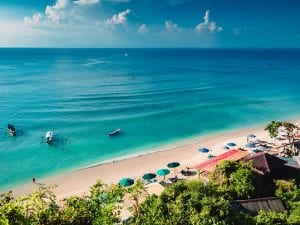
Relaxing in Fiji
Is there anything more synonymous with relaxation than lazing on a palm-fringe beach with a cocktail in hand? Luckily enough, the nearby island nation of Fiji beckons the weary, the stressed and those in need of […]
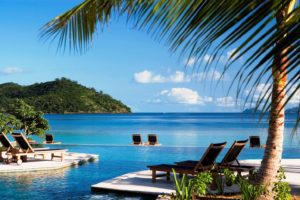
Time to Book a Warm Escape
Time To Book A Warm Escape? With Winter setting in and Summer a distant memory, perhaps it’s time for a short break to somewhere sunny and warm. Take an extra-long weekend or even a week […]
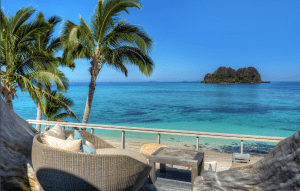
Spotlight on Vomo Island Fiji
Forget about work, traffic, shopping and cooking for a few days and truly relax and unwind in a little corner of South Pacific Paradise. This stunning property located on a privately-owned island is an upmarket […]
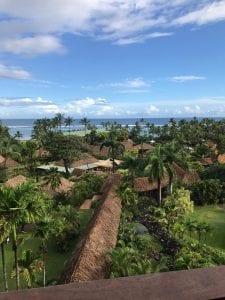
Fiji, Instant Relaxation
From the moment my brother and I stepped onto the Nadi Airport tarmac (looking forward to spending the week at a 5-star resort for our cousin’s wedding) we were immediately amazed at our surroundings; as […]

IMAGES
VIDEO
COMMENTS
Discover Fiji, where happiness comes naturally. Explore our breath-taking islands, vibrant culture, and stunning landscapes. Plan your perfect getaway today! All you need to know about accommodation, things to do and holidaying in Fiji. With 333 islands nestled in the heart of the South Pacific, Fiji is Where Happiness Finds You.
Elsewhere, you'll want to bring your own bottled water or carry a filter, like a Lifestraw, to drink from. 13. Take extra care in the cities after dark. When it comes to safety in Fiji, follow the same precautions you'd take in any major city. Stow your belongings out of sight and keep your wits about you.
Travel Requirements for Fiji: Visas, COVID Guidelines, and Care Fiji Commitment When planning your trip to Fiji, it's essential to be aware of the travel requirements in place. This guide provides information on visas, COVID-19 guidelines, and the Care Fiji Commitment, ensuring you have a smooth and enjoyable experience during your visit.
Learn about Fiji's tropical climate, rich culture, diverse geography and travel tips before you visit. Find out about banking, communications, currency, customs, dress, electricity and more.
Fiji is a country of more than 300 islands in the South Pacific Ocean, known for its stunning natural beauty, rich cultural diversity, and friendly people. Fiji's geography ranges from lush rainforests and mountains to coral reefs and sandy beaches, offering a variety of activities and attractions for visitors. From its stunning geography and diverse regions to its fascinating history ...
12. Drink kava, Fiji's beverage of choice. From formal events to parties among friends, kava is Fiji's drink of choice. Kava (yagona) is made from pepper root ground into a fine powder and mixed with water. It's typically scooped from a large wooden bowl (tanoa) and served in a coconut shell cup (bilo).
Fiji. Australia & Pacific. Set your internal clock to 'Fiji time': exploring the archipelago's exquisite beaches, undersea marvels, lush interiors and fascinating culture shouldn't be rushed. Best Time to Visit. Best Places to Visit. Attractions.
See ways to experience (52) 3. Kula Wild Adventure Park. 1,597. Nature & Wildlife Areas. Admission tickets from $28. Kula WILD Adventure Park is a 28 acre property set in 3 valleys, with 12 acres of coastal forest open to visitors. Huge walk-through enclosures put the visitor inside the habitats of our resident ….
Fiji (Fijian: Viti, Hindi: फ़िजी) (sometimes called the Fiji Islands) is an archipelago nation in Melanesia in the Pacific Ocean. It lies 2000 km north of New Zealand and consists of 332 islands, Viti Levu and Vanua Levu being the largest ones.. Fiji's main attraction is its paradise-like nature, with perfect palm-lined beaches, blue waters and green inland hills.
An Intro About Fiji. Location: Fiji is located in the South Pacific in the continent of Oceania.Fiji sits in the centre of Tonga, Wallis and Futuna, Vanuatu and New Caledonia and is about two-thirds of the way between Hawaii and New Zealand.. Land size: 18,274 km 2 (7,056 sq mi). Climate: Daily average temperature - 25.5 ° C/77.9 ° F, average rainfall 1,826mm/71.9″ - 3,065mm/120.7″.
The information in this guide has been compiled from our extensive research, travel and experiences across Fiji and the South Pacific, accumulated over more than a decade of numerous visits to each destination. Additional sources for this guide include the following: Tourism Fiji (General travel advice - Updated [2024])
Surfing. All you need to know about things to do and holidaying in Fiji. With 333 islands nestled in the heart of the South Pacific, Fiji is Where happiness comes naturally.
Diving in Fiji. Fiji consists of over 300 islands scattered over 42,000 square miles of ocean. It's not hyperbole to state that this island nation has some of the best diving in the world. Notably, the variety of soft coral is astounding. Fed by the rich nutrients streaming ...
Sri Siva Subramaniya Temple, Nadi. Sunset Dinner Cruise to Robinson Crusoe Island. Sigatoka Sand Dunes National Park, Viti Levu. Fiji Museum, Viti Levu. Levuka, Ovalau. Bouma National Heritage Park, Taveuni Island. Sawa-i-Lau Caves, Yasawa Islands. Fiji - Climate Chart. Map of Fiji - Top-Rated Tourist Attractions.
Discover more places in Fiji. Beqa, Vatulele and Kadavu Travel Guide. Lomaiviti and Lau Travel Guide. The Mamanucas and Yasawa Islands Travel Guide. Nadi and around Travel Guide. Rural Viti Levu Travel Guide. Suva and around Travel Guide. Vanua Levu and Taveuni Travel Guide. Travel advice for Fiji.
6. Visit the Traditional Fijian Village of Navala. On Viti Levu, see Fiji's most picturesque Fijian village, Navala. Either visit the village independently by taking a taxi, 4WD car or a local bus from Ba or join a tour like Tours In Fiji (more info, read reviews and book tickets on Viator or Tripadvisor).
4. Denarau Island. Best place to stay for families Located 20 minutes from the airport, the small island of Denarau is a wonderful option for families - everything you need is on your doorstep. The outcrop, connected to the mainland via a bridge, has been developed into a luxury tourism spot complete with a state-of-the-art marina, five-star resorts, top-notch restaurants and an 18-hole golf ...
Planning a Trip to Fiji. Travel Information for Visiting These Friendly South Pacific Islands. Spread across 18,372 square miles of the South Pacific, and consisting of 333 islands, of which 110 are inhabited, lies the Republic of the Fiji Islands. While Fiji's landscape is not quite as jade-green as Tahiti's, its waters are equally crystal ...
Dive into the beauty of Fiji's mainland with Tourism Fiji. Explore attractions, activities, and more on the main island. Places to go. Things to do. Fiji Guides. Deals & Offers. Places to go. Things to do. Fiji Guides. Deals & Offers. Places to Go. Coral Coast. Nadi. Pacific Harbour. Denarau. Suncoast. Suva. All Places. Help & Support. Login ...
24 Top All-Inclusive Resorts in the U.S. for 2024. These amazing all-inclusive resorts offer activities and amenities galore. Erin Evans January 4, 2024. Ranking of the top 11 things to do in Fiji ...
The wet season is hotter and more humid, with temperatures around 22-33 ° C (72-91 ° F) and an average monthly rainfall of 180-310mm (2.8-6″). This is also Fiji's cyclone season, which means there's a risk of cyclones (but only a risk, which you can learn more about in How to Prepare for a Cyclone in Fiji).
Thanks to high levels of population immunity and a significant decrease in COVID-19 related deaths and hospitalizations, the situation has stabilized. For travellers arriving in Fiji by air or sea, proof of COVID-19 vaccination is no longer required. And while travel insurance isn't mandatory, it's highly recommended to cover any unexpected ...
in this video I'm going to share my experience in FIJI and how we spent less than $1k to experience its beauty. ☆ And please make sure to Like, Comment, and...
Royal Davui Island Resort, nestled in the breathtaking Beqa Lagoon, Fiji, is an exclusive adults-only sanctuary that offers an unparalleled level of luxury and privacy. This secluded tropical paradise is the perfect destination for those seeking the ultimate escape, with pristine beaches, turquoise waters, and lush greenery creating a serene ...